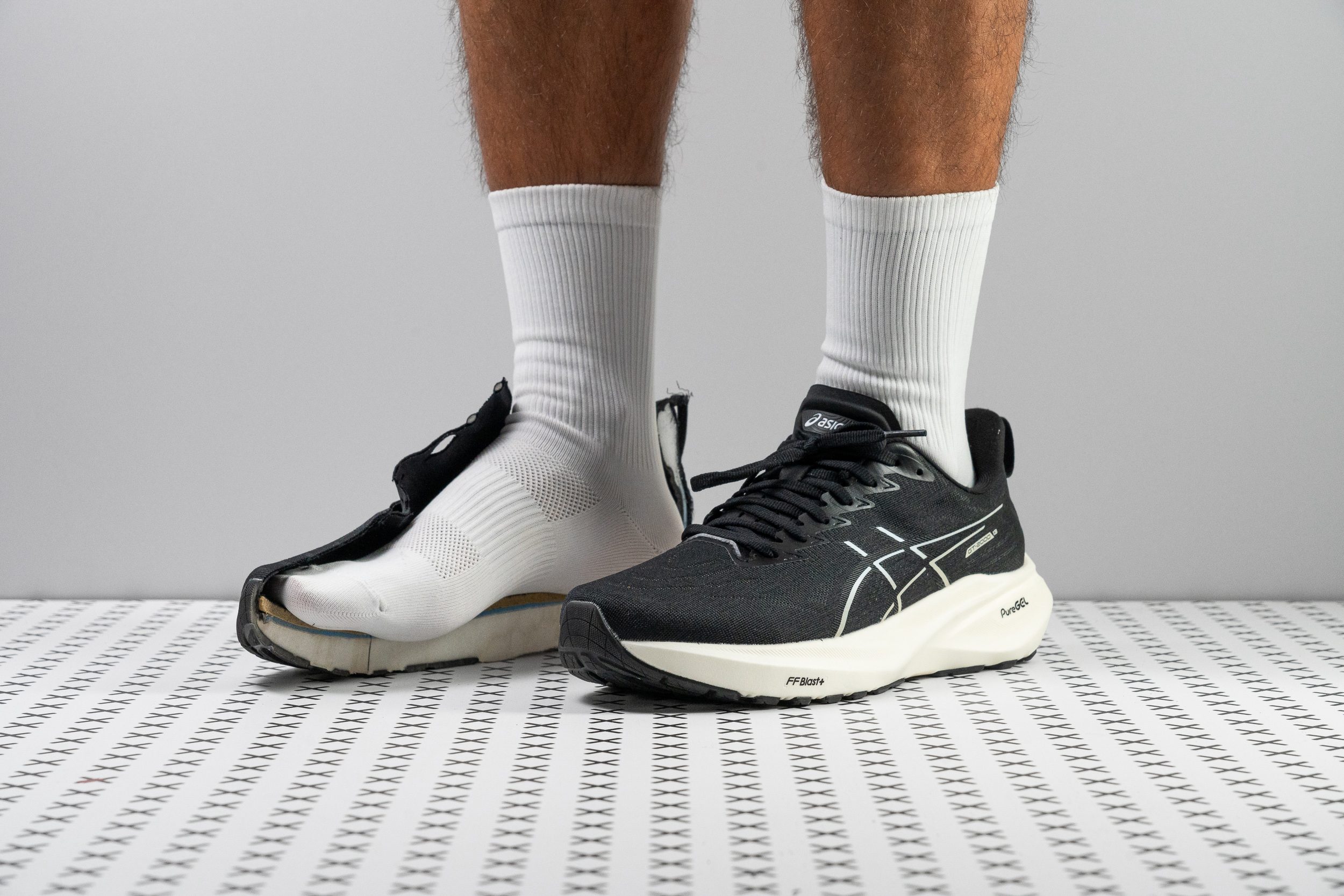Our verdict
Pros
- Exceptionally durable
- Reliable
- Lighter than v12
- Heel-striker optimised
- Superior stability
- Can handle walking too
- All-around comfort
- Softer FF Blast+ midsole
- Ortholite plush insole
- Optimised traction
Cons
- Not for speedy runs
- Insufficiently padded tongue
- Upper lacks vertical room
Audience verdict
- Top 27% in road running shoes
- Top 18% in stability running shoes
- Top 16% most popular running shoes
Comparison
The most similar running shoes compared
+ + Add a shoe | |||||
|---|---|---|---|---|---|
| Audience score | 89 Great! | 82 Good! | 85 Good! | 80 Good! | |
| Price | £140 | £140 | £140 | £110 | |
| Pace | Daily running | Daily running | Daily running | Daily running | |
| Shock absorption | Moderate | High | Moderate | High | |
| Energy return | Low | Moderate | Moderate | Moderate | |
| Traction | High | High | High | High | |
| Arch support | Stability | Stability | Stability | Stability | |
| Weight lab Weight brand | 9.3 oz / 264g 9.4 oz / 266g | 9.5 oz / 269g 9.4 oz / 266g | 10.4 oz / 295g 10.5 oz / 298g | 8.1 oz / 231g 8 oz / 228g | |
| Lightweight | ✗ | ✗ | ✗ | ✓ | |
| Drop lab Drop brand | 9.4 mm 8.0 mm | 8.7 mm 8.0 mm | 9.3 mm 8.0 mm | 9.4 mm 5.0 mm | |
| Strike pattern | HeelMid/forefoot | HeelMid/forefoot | HeelMid/forefoot | HeelMid/forefoot | |
| Size | True to size | True to size | Slightly small | Slightly small | |
| Midsole softness | Soft | Soft | Soft | Soft | |
| Difference in midsole softness in cold | Small | Normal | Big | Big | |
| Toebox durability | Good | Decent | Decent | Bad | |
| Heel padding durability | Good | Good | Bad | Decent | |
| Outsole durability | Good | Good | Decent | Bad | |
| Breathability | Moderate | Warm | Moderate | Breathable | |
| Width / fit | Medium | Medium | Medium | Narrow | |
| Toebox width | Medium | Narrow | Medium | Narrow | |
| Stiffness | Moderate | Moderate | Moderate | Moderate | |
| Torsional rigidity | Stiff | Stiff | Moderate | Stiff | |
| Heel counter stiffness | Stiff | Stiff | Stiff | Stiff | |
| Rocker | ✗ | ✗ | ✗ | ✓ | |
| Heel lab Heel brand | 36.6 mm 36.0 mm | 36.9 mm 36.5 mm | 36.8 mm 38.0 mm | 36.0 mm 33.0 mm | |
| Forefoot lab Forefoot brand | 27.2 mm 28.0 mm | 28.2 mm 28.5 mm | 27.5 mm 30.0 mm | 26.6 mm 28.0 mm | |
| Widths available | NormalWideX-Wide | NormalWideX-Wide | NarrowNormalWideX-Wide | NormalWide | |
| Orthotic friendly | ✓ | ✓ | ✓ | ✓ | |
| Season | All seasons | All seasons | All seasons | SummerAll seasons | |
| Removable insole | ✓ | ✓ | ✓ | ✓ | |
| Ranking | #161 Top 25% | #279 Bottom 25% | #215 Bottom 42% | #304 Bottom 18% | |
| Popularity | #104 Top 16% | #66 Top 18% | #32 Top 9% | #87 Top 24% |
Who should buy
We've thoroughly tested the ASICS GT 2000 13 and we think it's a superb daily trainer for:
- Those with moderate stability issues seeking subtle support to align their stride without feeling restricted.
- Loyal fans of the GT 2000 series who buy each version—this one feels familiar but better.
- Runners in need of a cushioned, durable, and stable daily trainer that’s built to last and is priced well below the Gel Kayano 31.
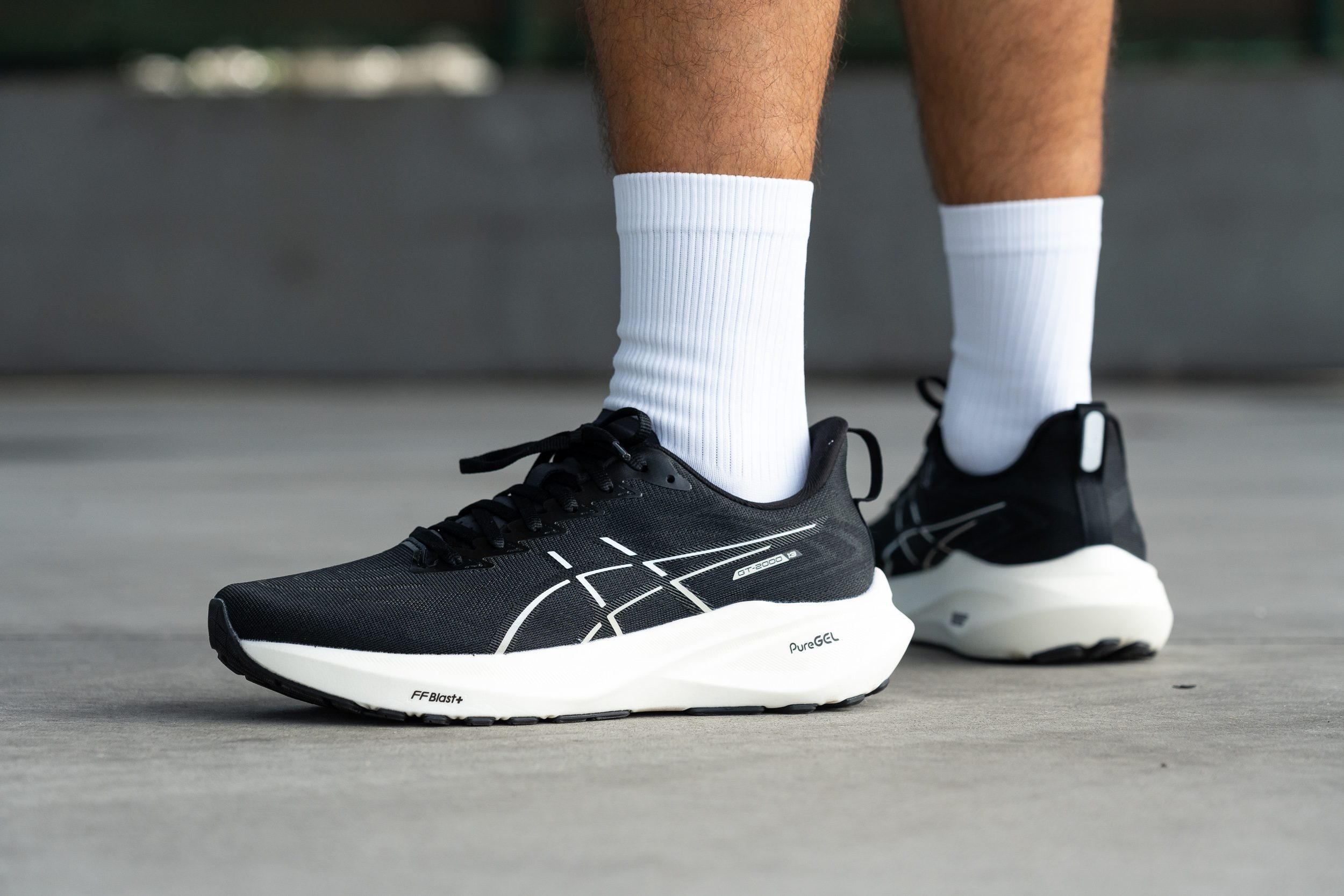
Who should NOT buy
In our view, the GT 2000 13 may not be the best option for forefoot strikers due to its high drop and the PureGEL technology in the heel. From our angle, the Hoka Arahi 7 and the Altra Paradigm 7 offer a more tailored mild-stability experience for this group of runners.
Additionally, we think the GT 2000 13 lacks the fun factor some runners seek. If that really matters to you, consider the ASICS Novablast 4 or the New Balance FuelCell Rebel v4—both of which are now more stable than ever and better suited for those seeking a blend of amusement and function.
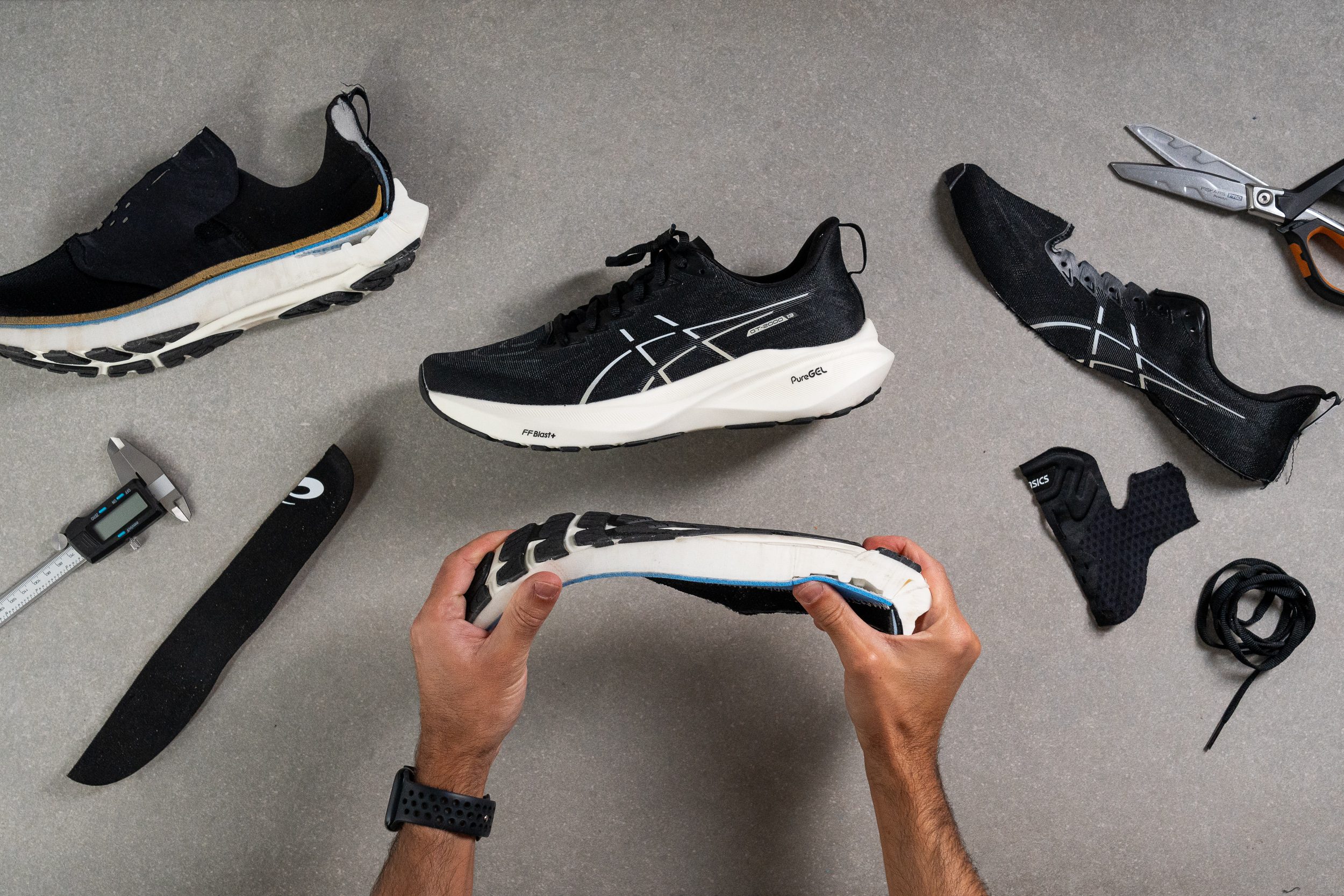
Cushioning
Shock absorption
The GT 2000 13 stays consistent with its predecessor in impact dampening, scoring similar results: 119 SA in the heel and 110 SA in the forefoot. These average figures match the intended purpose of this shoe quite well.
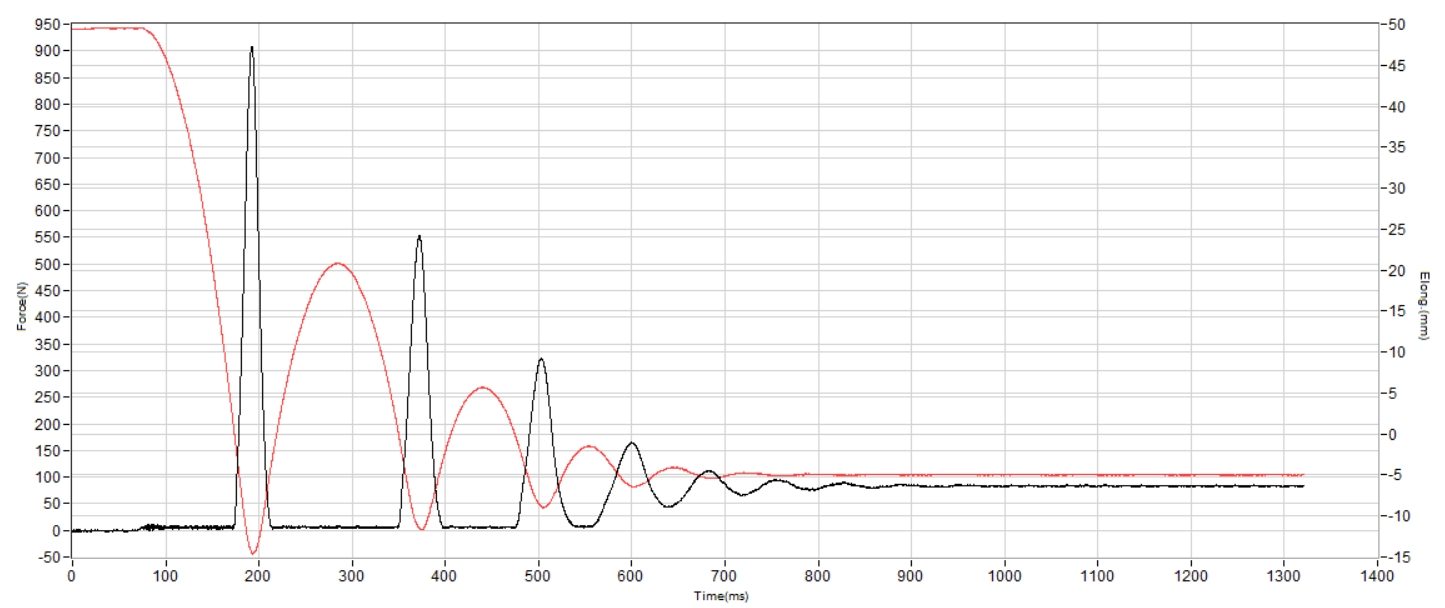
| GT 2000 13 | 119 SA |
| Average | 129 SA |
Energy return
We also found a slight improvement in energy return, rising from 47.9% in v12 to 50.6% in this 13th version. However, it’s still far below what we’d expect from a shoe in the GT 2000 13’s price range.
| GT 2000 13 | 50.6% |
| Average | 58.5% |
Heel stack
And no, ASICS did not opt to reduce the shoe's thickness to make it lighter—they maintained the same 36.6-mm stack height in the heel, providing ample cushioning for most runners.
Additionally, the heel features the same PureGEL insert as its predecessor, which is especially advantageous for heavier individuals and enhances comfort during walking.
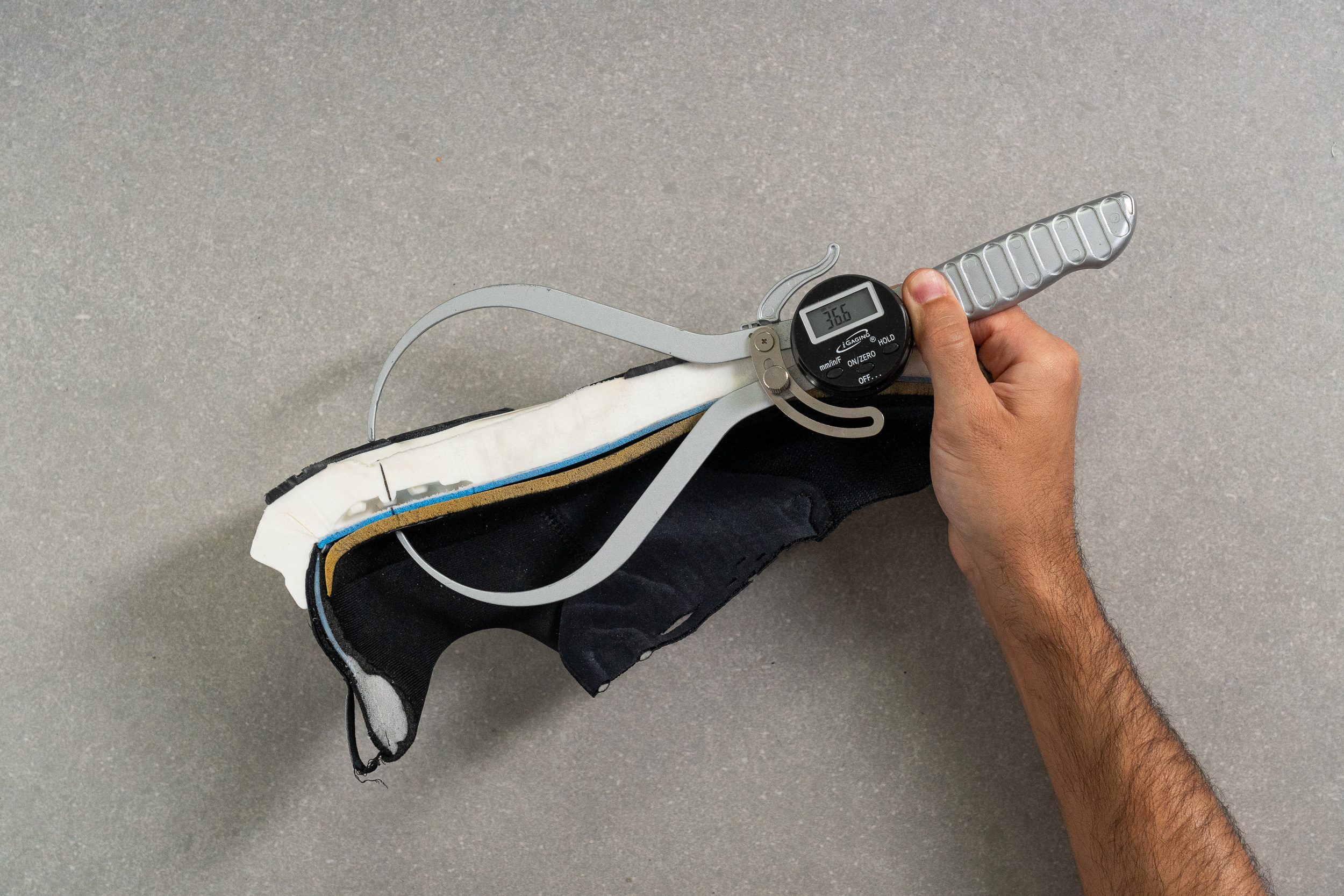
| GT 2000 13 | 36.6 mm |
| Average | 34.8 mm |
Forefoot stack
At 27.2 mm, the front of the shoe accommodates those who use a midfoot or forefoot striking technique, even during long-distance training. In fact, we believe that this shoe is ideal for anyone seeking enhanced stability during their medium to long easy runs, particularly in marathon training.
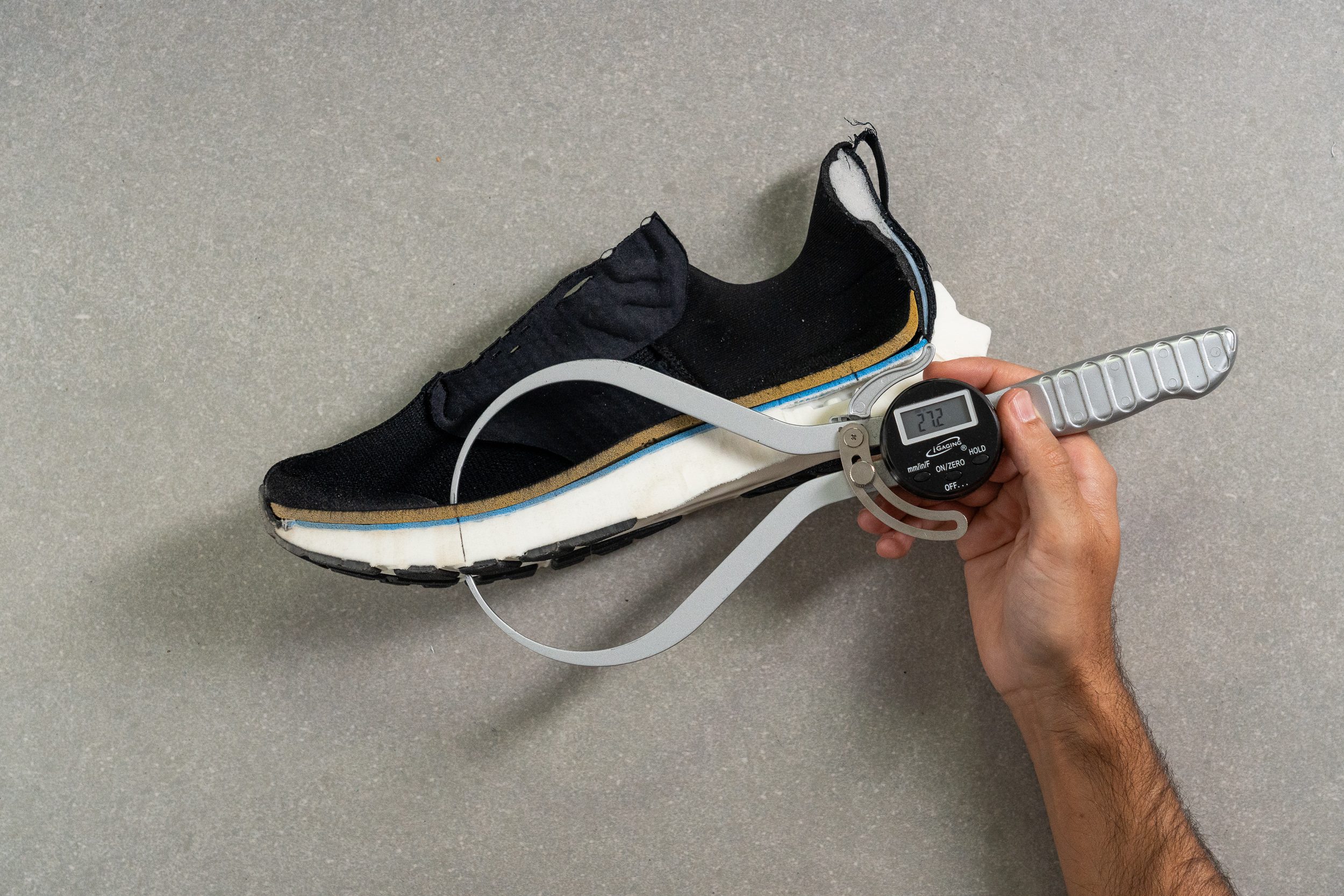
| GT 2000 13 | 27.2 mm |
| Average | 26.2 mm |
Drop
The difference between both measurements reveals a 9.4-mm heel-to-toe drop, placing it within the popular 8-to-10 mm range typical of most daily trainers. This design benefits all types of footstrikes, though we believe it works best for heel strikers.
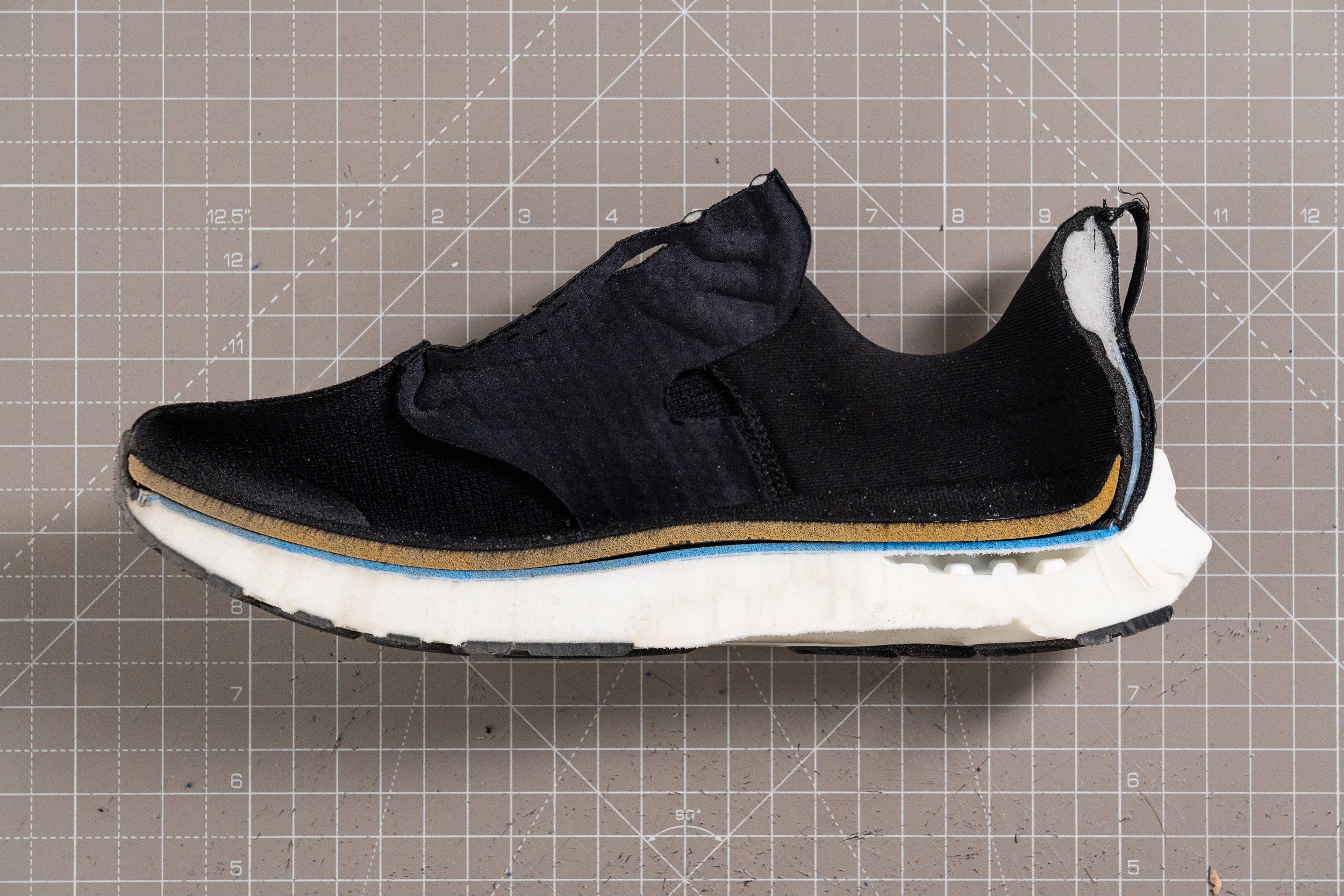
| GT 2000 13 | 9.4 mm |
| Average | 8.6 mm |
Midsole softness
ASICS continues to use the FF Blast+ midsole found in many of their mid-tier shoes, like the Noosa Tri 16. This time, however, they've softened it to 18.5 HA from the 24.5 HA in the GT 2000 12.
While this isn't a drastic change, it was a necessary adjustment. We believe that while stability remains a priority for this shoe, the GT 2000's broad design allows for a more plush ride, which ASICS has now successfully delivered.
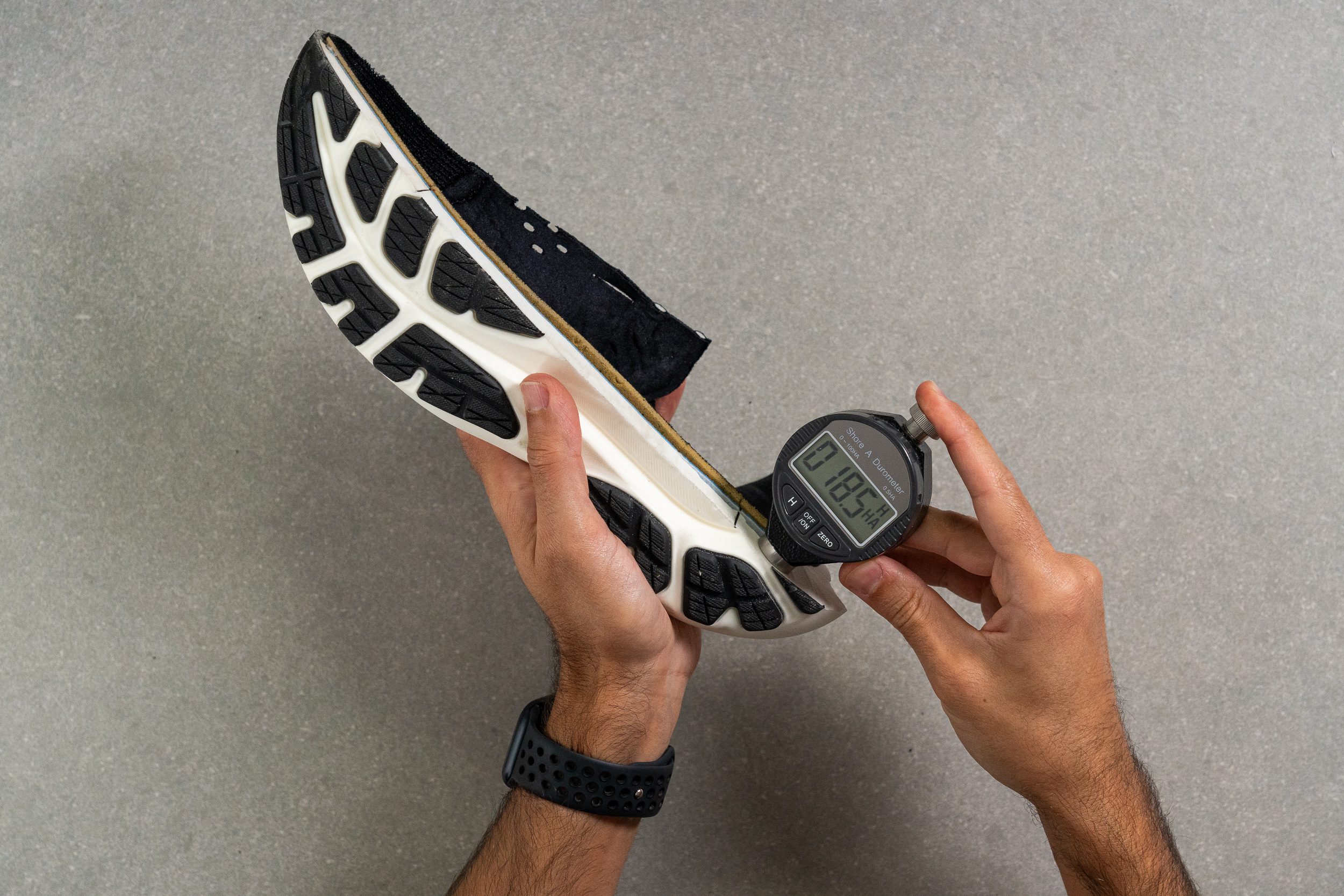
| GT 2000 13 | 18.5 HA |
| Average | 20.4 HA |
Rocker
Those seeking a classic ride will find the GT 2000 ideal, as ASICS maintains a non-rockered profile with just a slight toe-off aid at the forefoot end—nothing more.
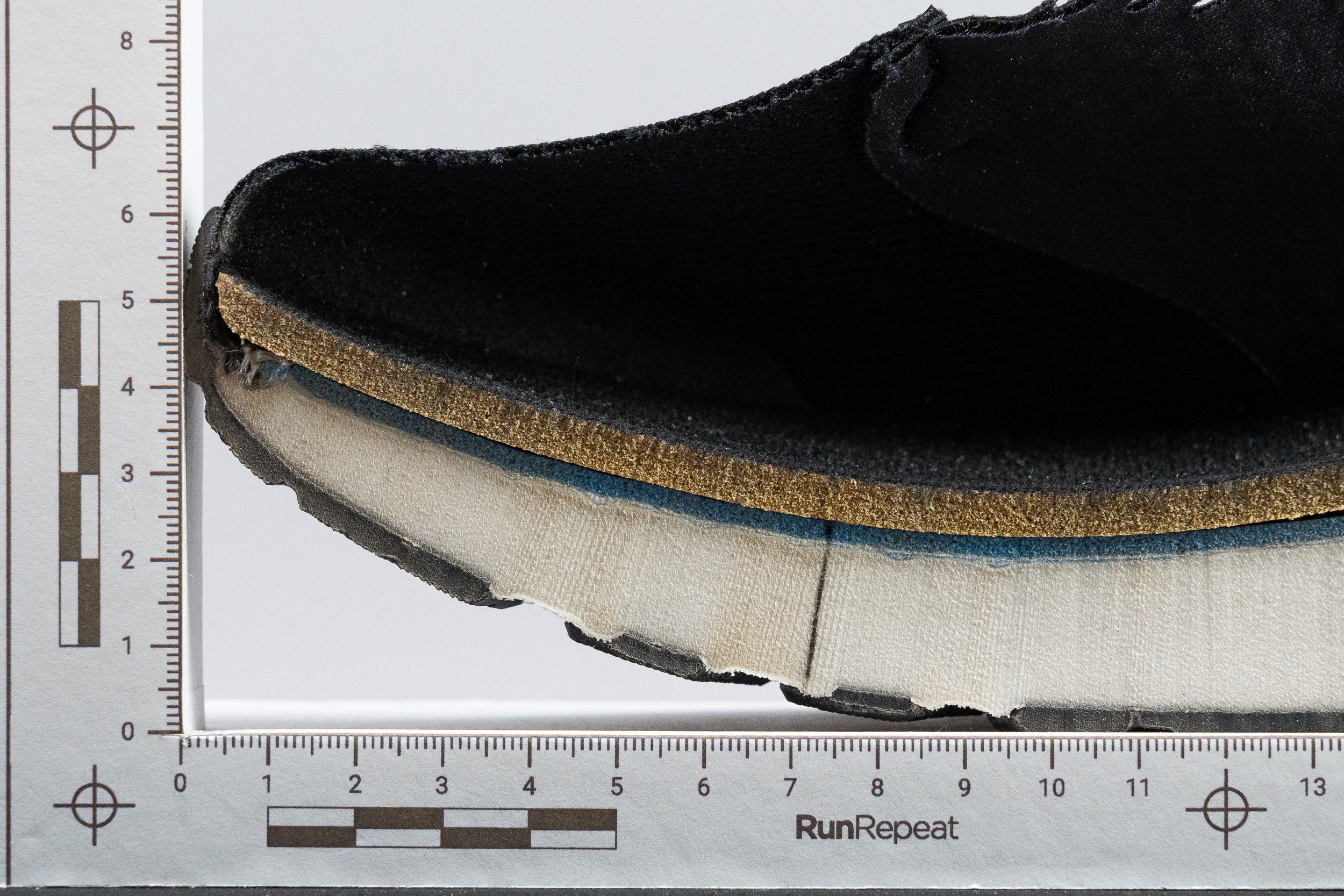
For those interested in a more rockered design, the market offers plenty of alternatives like the ASICS Superblast 2. However, with the GT 2000's longitudinal flexibility and moderate stack height, we believe this design approach is optimal.
PureGEL
PureGEL has become a common feature in ASICS's top-tier daily trainers, such as the Nimbus 26. This technology improves upon the older GEL, delivering enhanced comfort for heel strikers without the hefty weight of the previous materials.
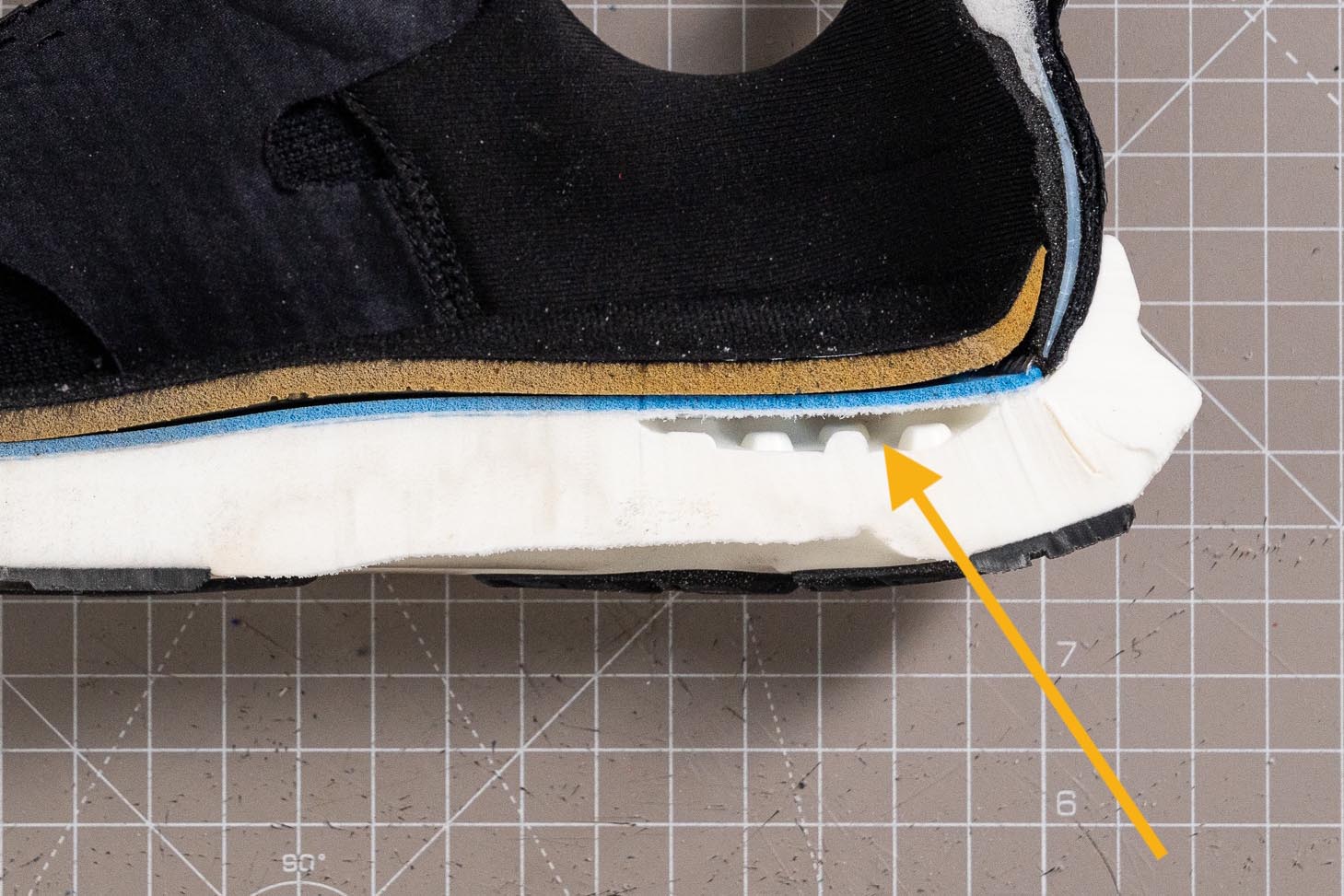
Positioned just beneath the sockliner and atop the midsole, as shown in the picture above, it effectively enhances comfort for heel strikers. But honestly, it might go unnoticed by most runners if we didn't highlight it or if it wasn't featured in the midsole.
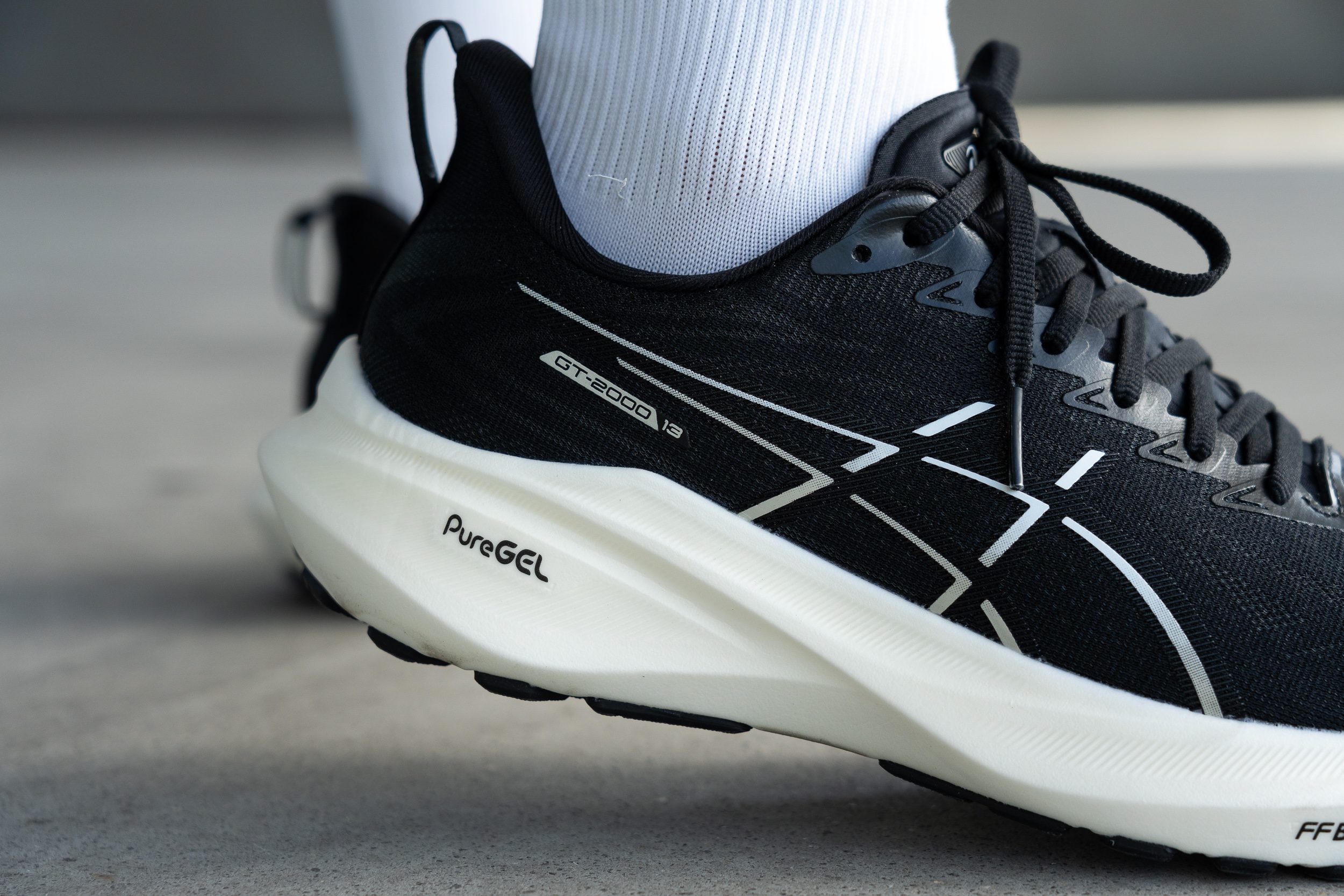
Size and fit
Turning our focus to the outsole, the Japanese brand adopts a cautious strategy here, tweaking the v12's design slightly by adding more rubber in wear-prone areas.
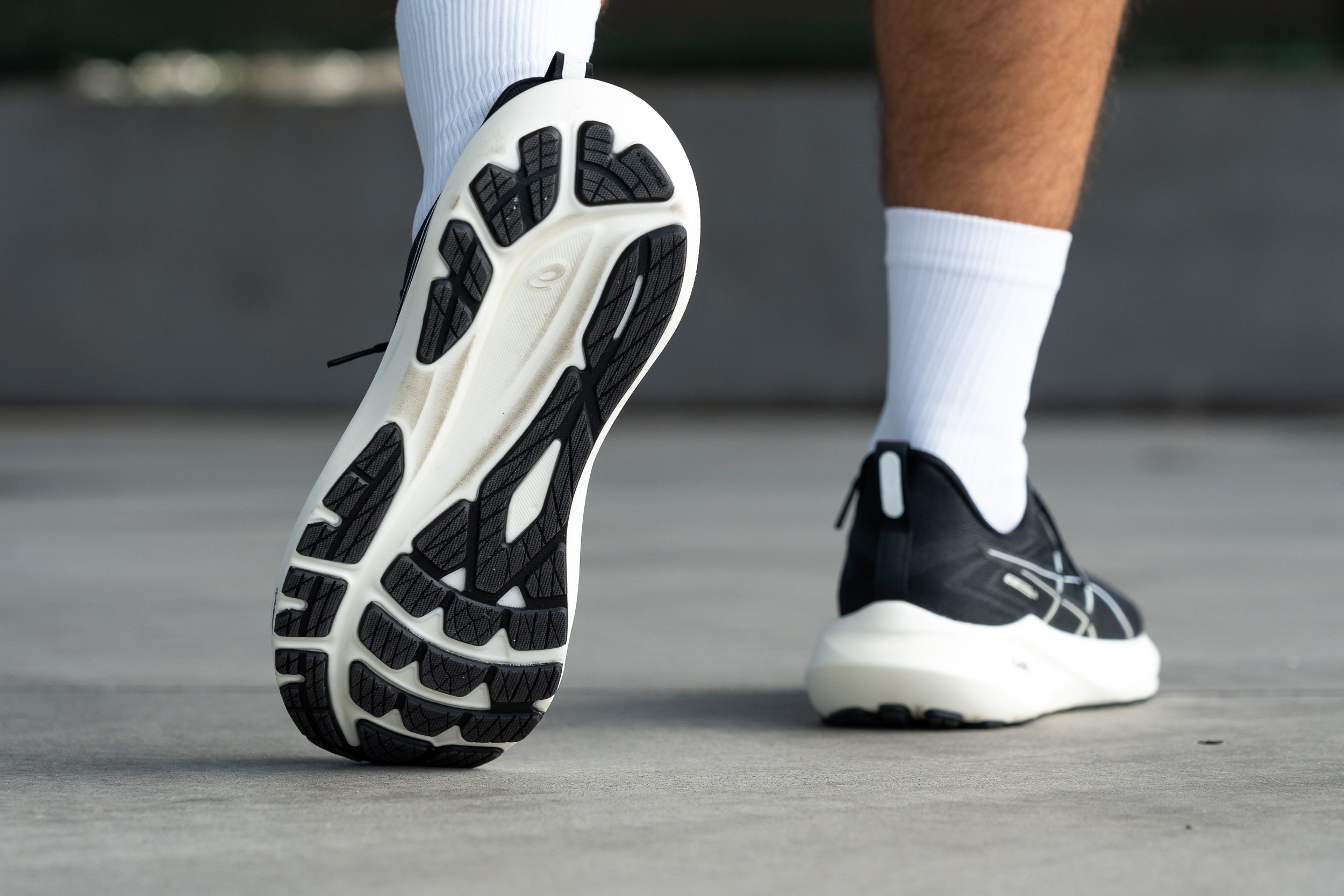
Our tests showed a hardness of 82.1 HC, close to average—expected for a shoe designed with a no-risk approach, and suggesting it will be quite durable. And although we still think ASICS could have opted for ASICSGRIP—their top outsole—the AHAR+ rubber used performs sufficiently well.
Size
ASICS GT 2000 13 fits true to size (102 votes).
Width / Fit
We filled the GT 2000 13 with a special gel, creating a mould that accurately captured its internal space for analysis. And then, we proceeded to work on it.
On our first measurement, the gel measured a balanced 96.0 mm in width, providing what we believe is a well-rounded, average fit suitable for most runners—a familiar approach for the GT series, designed to accommodate a wide range of individuals.
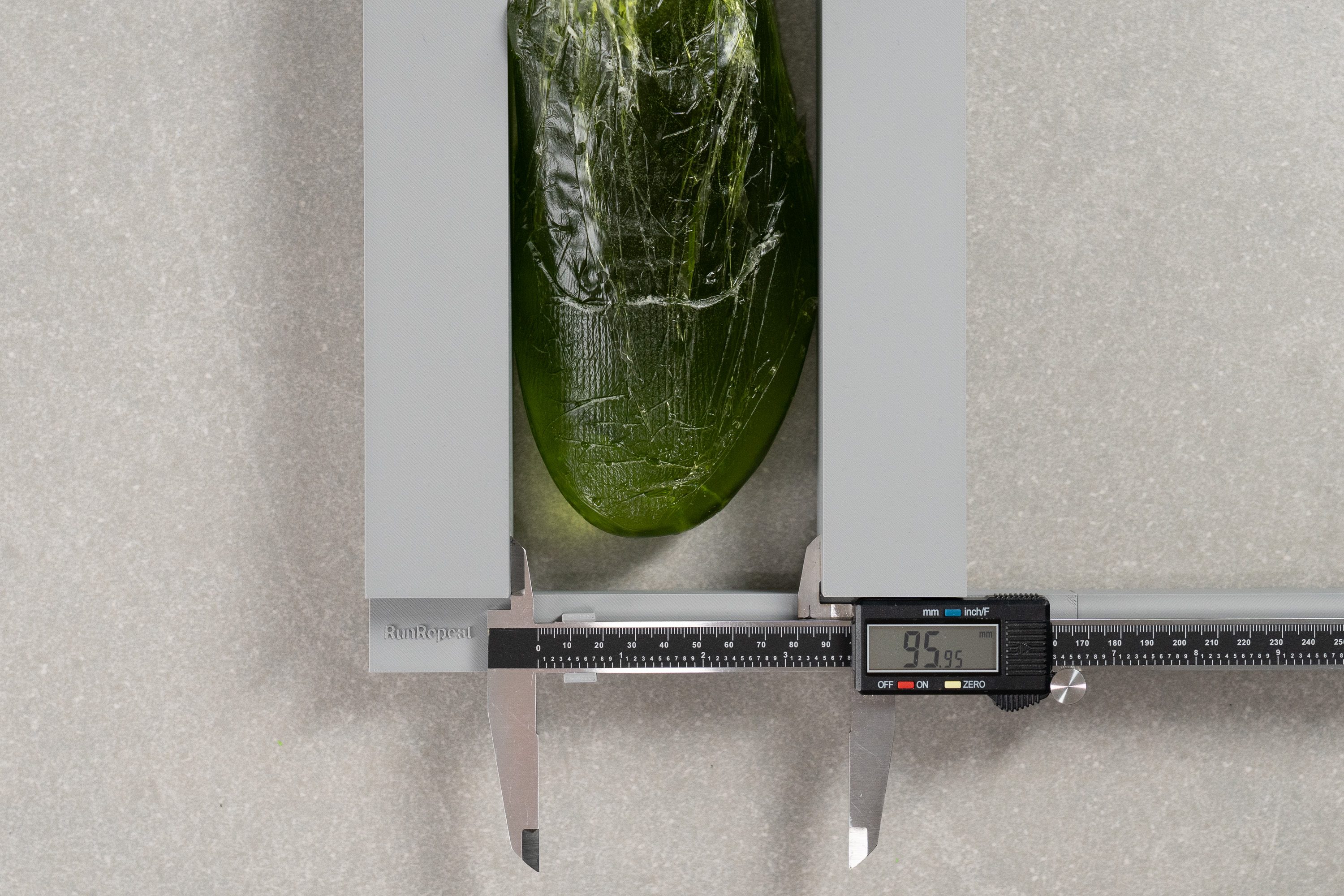
| GT 2000 13 | 96.0 mm |
| Average | 95.1 mm |
Toebox width
In the big toe area, we recorded a width of 73.3 mm, perfectly reflecting our experience while running in this shoe. It's neither spacious nor tight, but comfortably average.

| GT 2000 13 | 73.3 mm |
| Average | 73.3 mm |
Toebox height
We noticed less vertical volume compared to last year's model, but in our view, this isn't a deal-breaker for most runners, as the upper provides a bit of stretch.
To loosen the upper a bit, a classic runner's trick is to stuff as many newspaper balls as possible inside the toebox before and after your next run—a simple and effective method. However, if a low-volume upper is a red flag for you, we suggest getting the wide size or exploring alternatives using our bar chart for the best match.
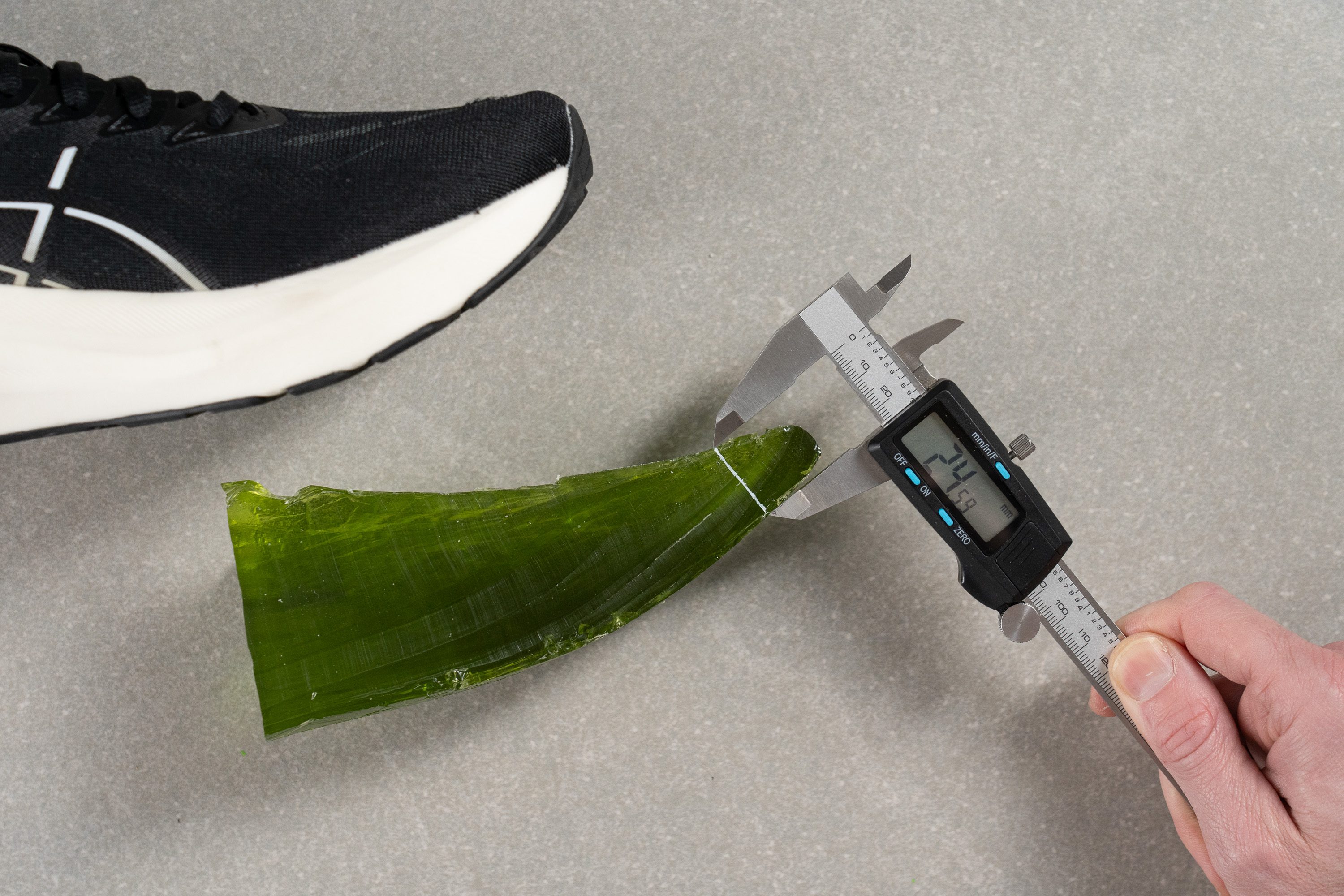
| GT 2000 13 | 24.6 mm |
| Average | 27.1 mm |
Traction / Grip
Traction test
This outsole is clearly built to last, but does it grip? At the end of the day, that’s what truly matters underfoot. And we had some concerns since ASICS used AHAR+ instead of their premium ASICSGRIP compound.
We tested it under wet conditions using our standard setup and ended up with a score of 0.47. While that’s not poor—it sits right around average— and it delivers good grip on dry and wet days, it didn’t deliver the same traction as other pricier ASICS models. Maybe that upgrade will come next year.
| GT 2000 13 | 0.47 |
| Average | 0.48 |
Outsole design
We found that the Japanese brand adopts a cautious strategy here, tweaking the v12's design slightly by adding more rubber in wear-prone areas. And it aligns very well with the GT 2000 placement in the market as a dependable running shoe.

Flexibility / Stiffness
We discovered that only 15.7N of force is required to bend the shoe to 30 degrees with our machine. This design effectively combines high torsional rigidity for enhanced support with longitudinal flexibility, which is what we seek in a GT 2000.
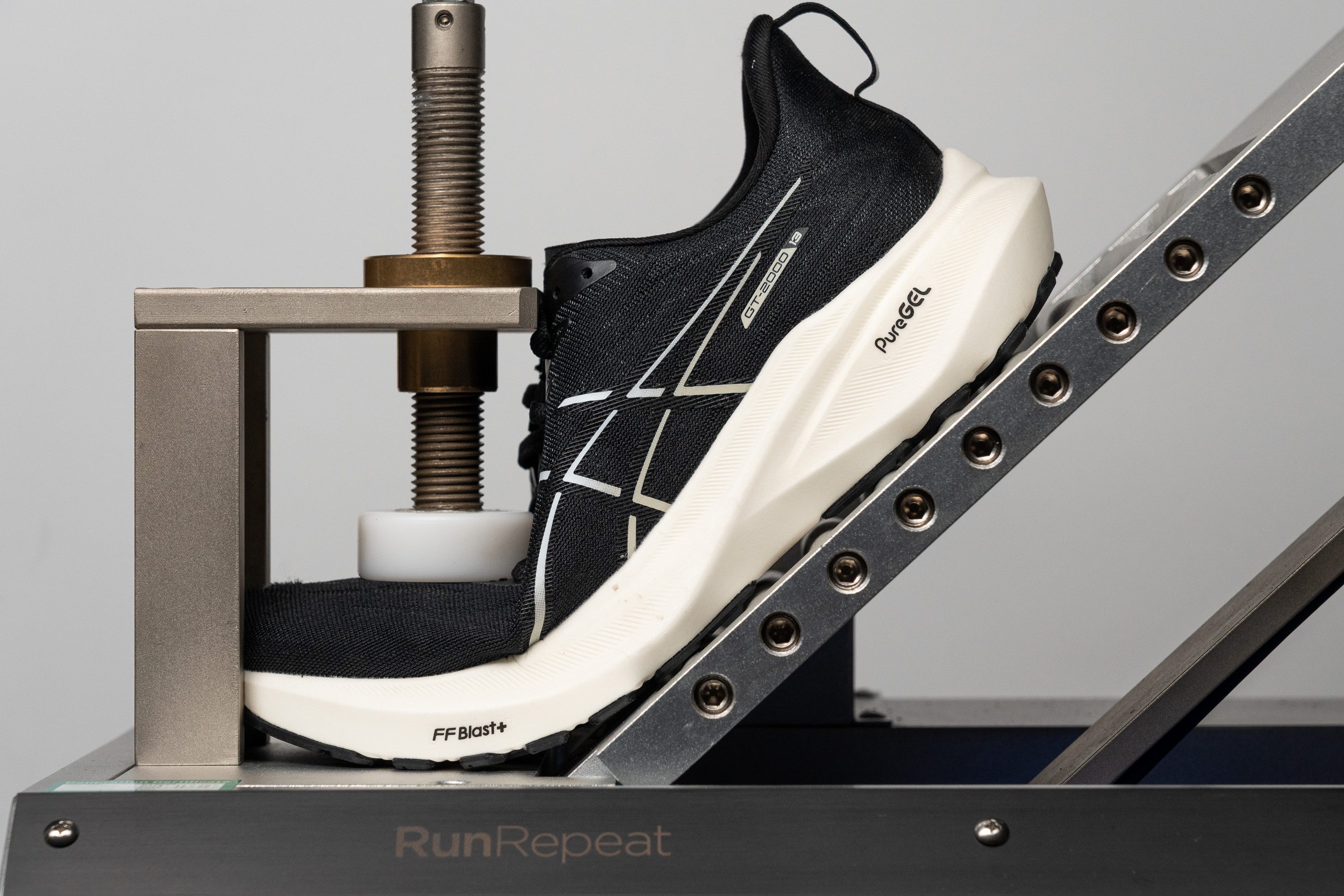
| GT 2000 13 | 15.7N |
| Average | 15.3N |
Stiffness in cold (%)
After retesting the GT 2000 13 following another 20-minute freeze, we were impressed by its performance—only becoming 6% stiffer. This minimal increase underscores its outstanding cold-weather resilience, making it a great choice for winter runners.
| GT 2000 13 | 6% |
| Average | 33% |
Weight
With its plush upper and substantial rubber, one might expect the GT 2000 13 to easily exceed the 10-oz mark, yet it doesn't.
We placed it on our kitchen scale and it registered at just 9.3 oz (264g)—a truly impressive figure for a durable daily trainer that also improves last year's model by 0.4 oz or about 10g.
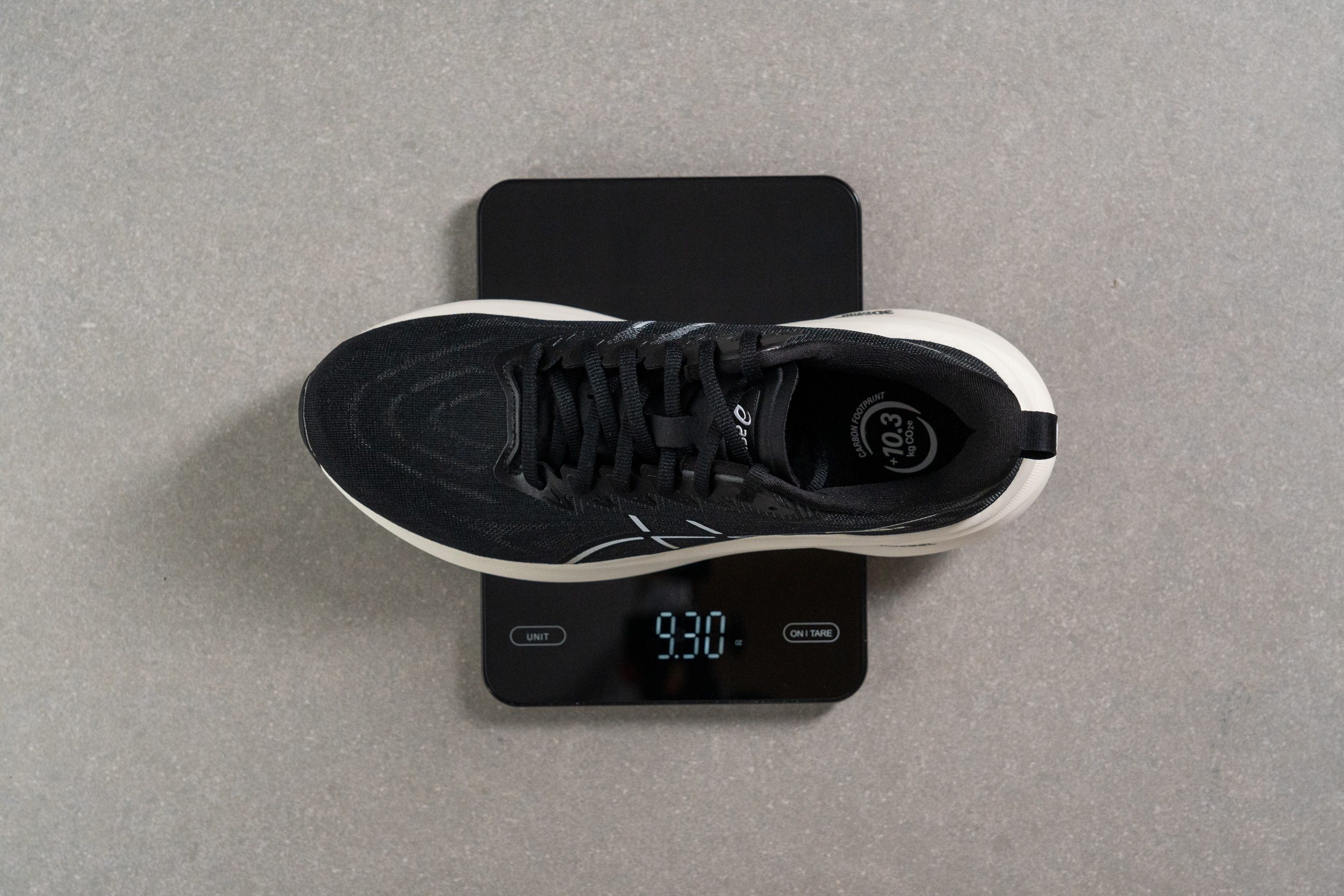
| GT 2000 13 | 9.3 oz (264g) |
| Average | 9.3 oz (264g) |
Breathability
The GT 2000 is universally acknowledged as a reliably consistent shoe across all categories, and we are eager to begin our testing on a positive note.
We tested its performance using a smoke-pumping machine on the mesh upper and awarded it a 4/5. This score is our favourite one for daily trainers—it ensures enough summer ventilation and winter cosiness for comfort throughout the year.
Designed for stability, it was no surprise to us that ASICS restricted airflow to the toebox. They've reinforced the sides significantly compared to other models, enhancing side support and reducing lateral collapse.
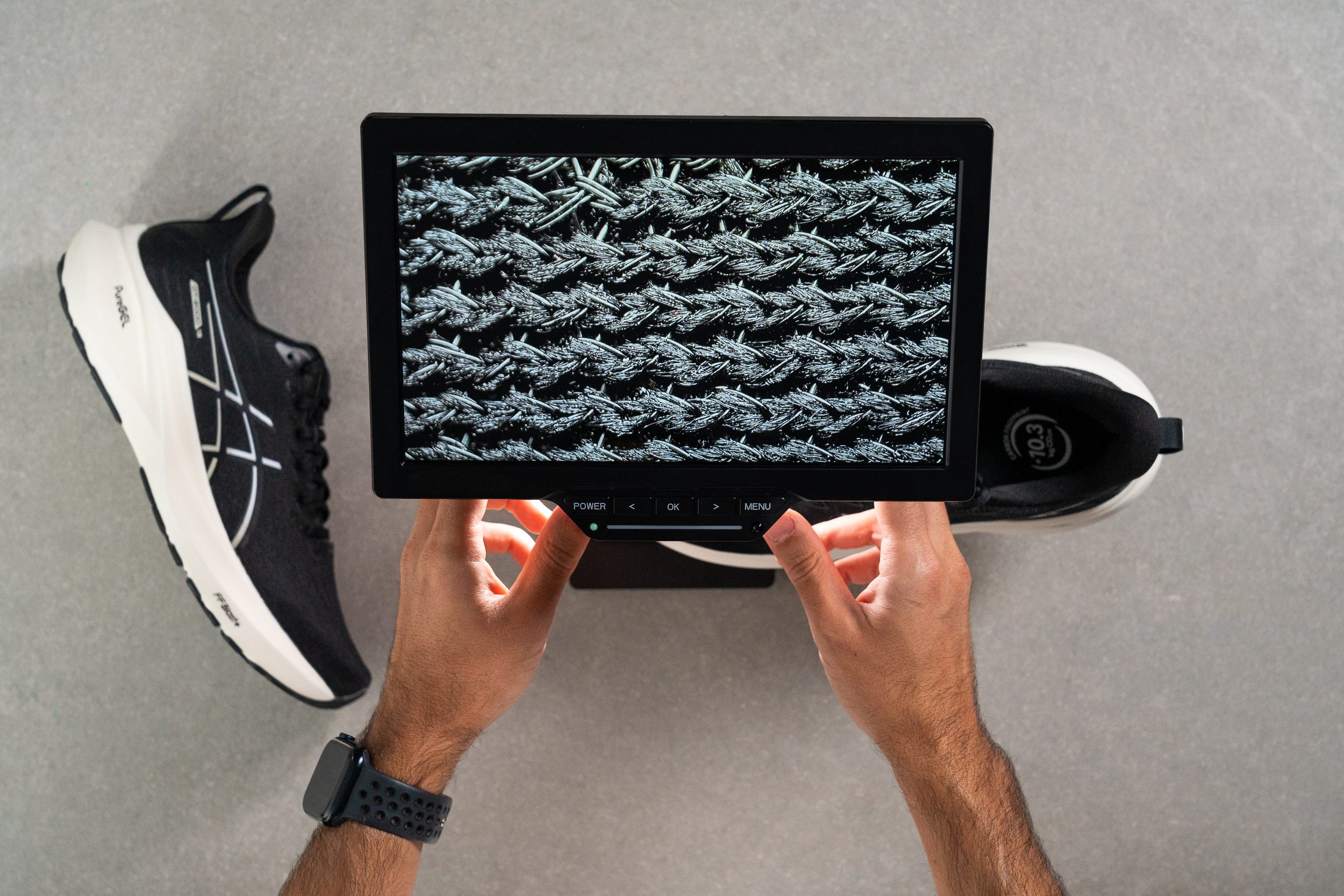
Under our microscope, we discovered a run-of-the-mill engineered mesh without big ventilation holes. While larger holes could improve breathability, durability would likely decrease—a crucial aspect for GT 2000 buyers that expect long shelf life.
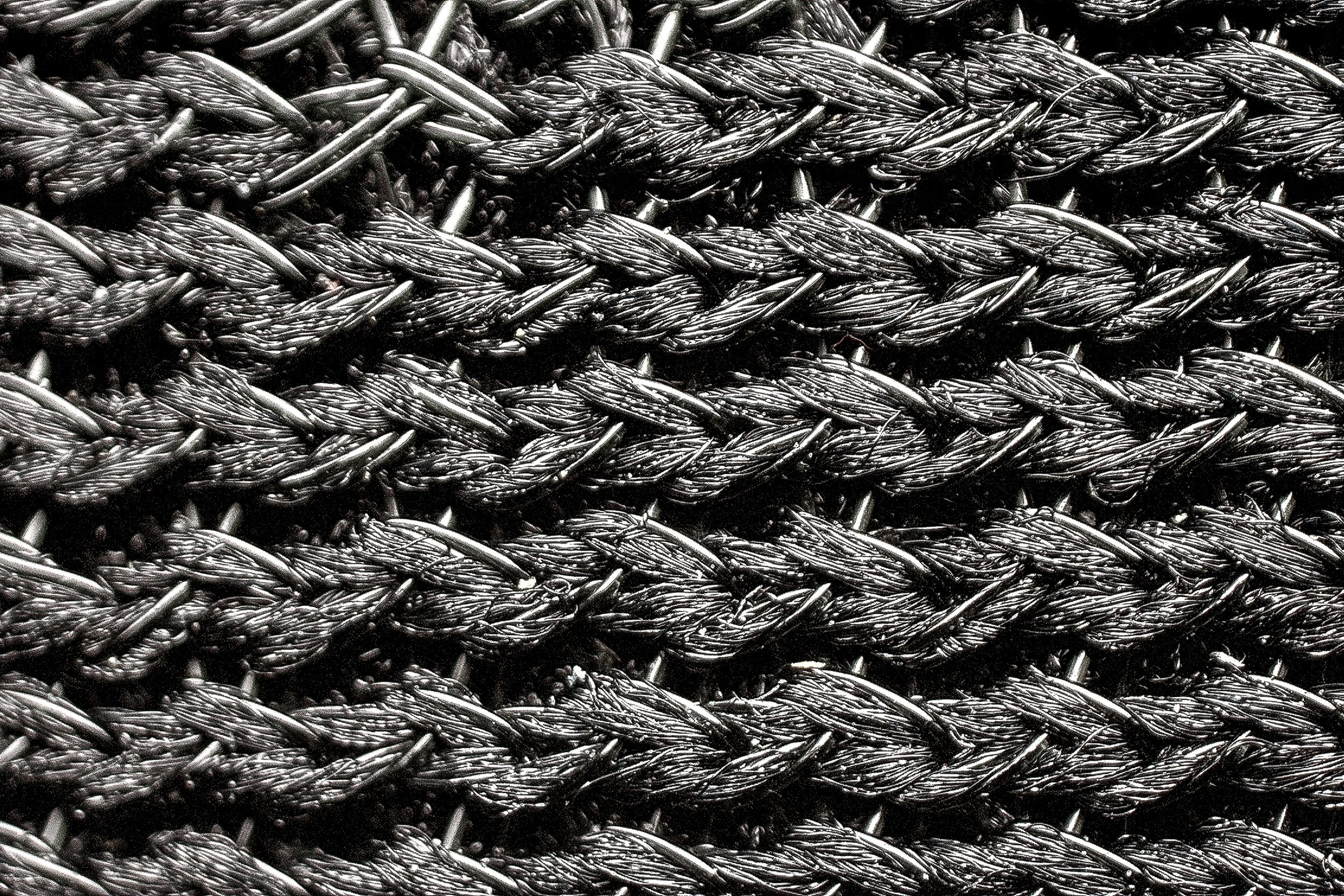
Overall, we found that the GT 2000 13 upper has adequate quality and padding. It lacks standout features but also avoids any major drawbacks, taking a no-risk design approach.
| GT 2000 13 | 4 |
| Average | 3.7 |
Stability
Lateral stability test
The GT 2000 saga consistently delivers superb stability without being noticeable—offering just the right feel of balance without overwhelming.

ASICS achieves this with their 3D Guidance System, which utilises a widened heel and high torsional rigidity to smooth out the ride, performing exactly as we expect from a mild-stability shoe.
In our testing, we confirmed that the design not only promises but delivers enhanced stability subtly—ideal for those who need a bit of support but prefer a natural feel underfoot.
Torsional rigidity
We previously noted the high torsional rigidity of the GT 2000, and ASICS has indeed increased it, achieving a top score of 5/5 in our manual tests—up from 4/5 in the GT 2000 12. This change might go unnoticed unless you're particularly attentive, as it is really subtle, and we had to twist both versions to really notice it.
However, it's important to understand that the GT 2000 lacks the flexibility typical of a neutral daily trainer, and that's fine for us. This rigidity provides enhanced stability, a major plus for this shoe, but it can also result in a less natural feel during runs.
| GT 2000 13 | 5 |
| Average | 3.5 |
Heel counter stiffness
The heel counter of the GT 2000 13 remains unchanged from last year, offering a firm structure that continues to serve heel strikers well and we rated at 4 out of 5.
| GT 2000 13 | 4 |
| Average | 2.9 |
Midsole width - forefoot
We've noted changes in the shoe's dimensions compared to last year's model—the forefoot is now narrower at 115.2 mm, typical of many daily trainers, down from 119.3 mm. While this adjustment might not favor forefoot strikers with stability needs, it does render the shoe more agile and lighter for most users.
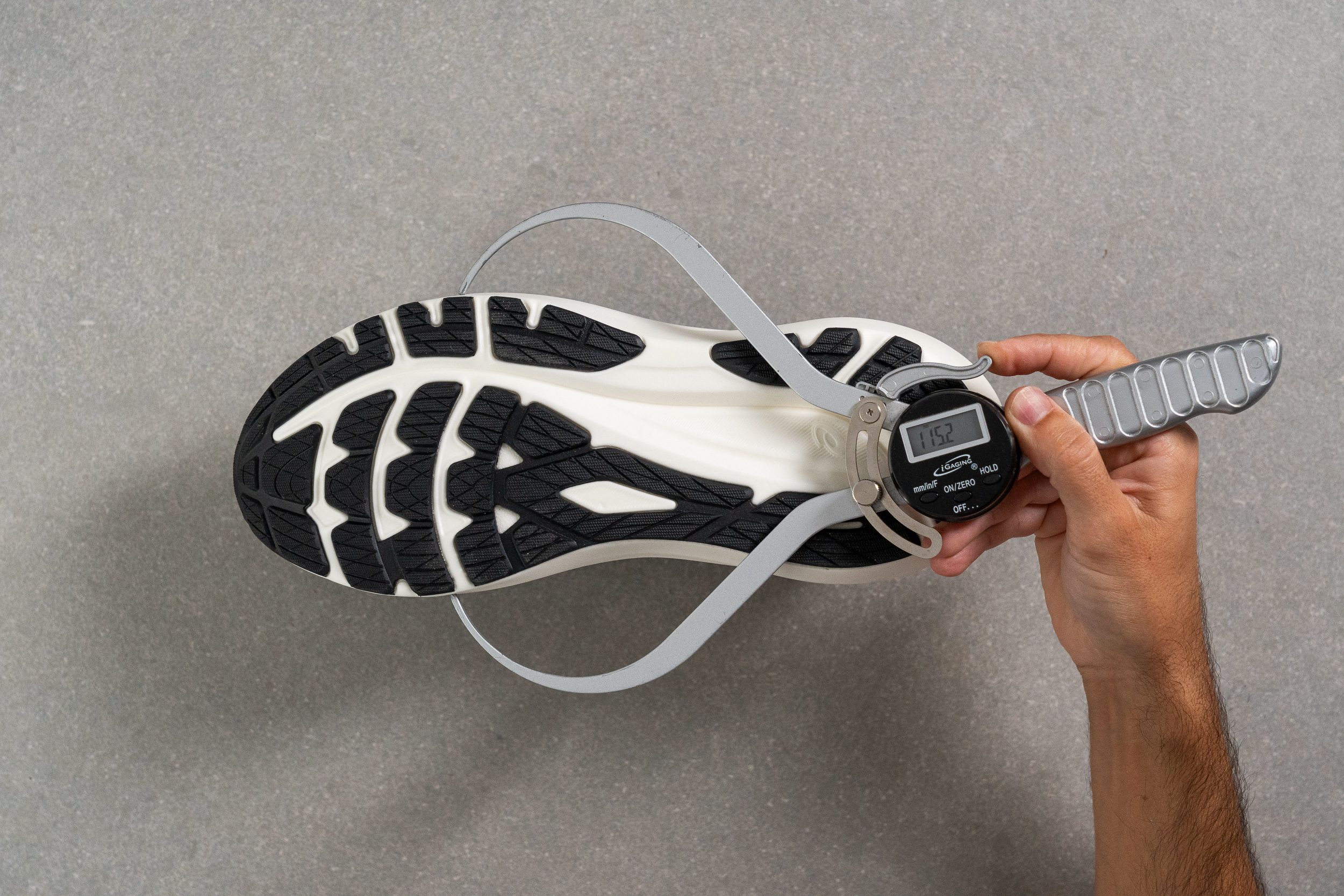
| GT 2000 13 | 115.2 mm |
| Average | 114.4 mm |
Midsole width - heel
ASICS has broadened the heel of this shoe to 102.2 mm, enhancing stability for heel strikers—who are the main target of this model.
This adjustment makes it one of the broadest heels in mild-stability daily trainers available today.
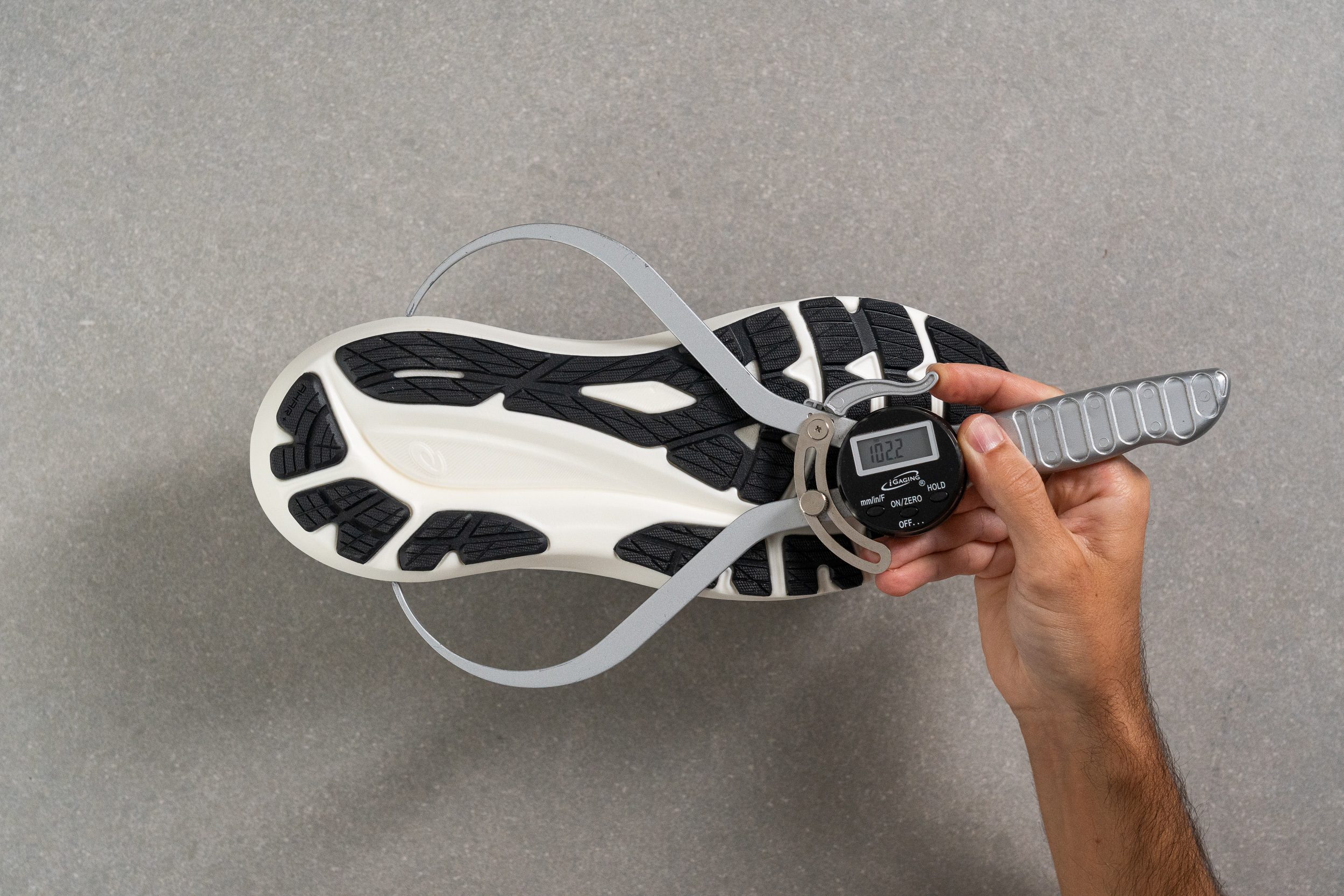
| GT 2000 13 | 102.2 mm |
| Average | 90.7 mm |
Durability
Toebox durability
Starting with its impressive breathability, we were eager to test if the lack of ventilation holes would yield the durable results we anticipate from the GT 2000 series.
Indeed, it did! We tested the engineered mesh upper with a Dremel and observed less wear-and-tear than usual, earning the shoe a solid 4/5 rating!
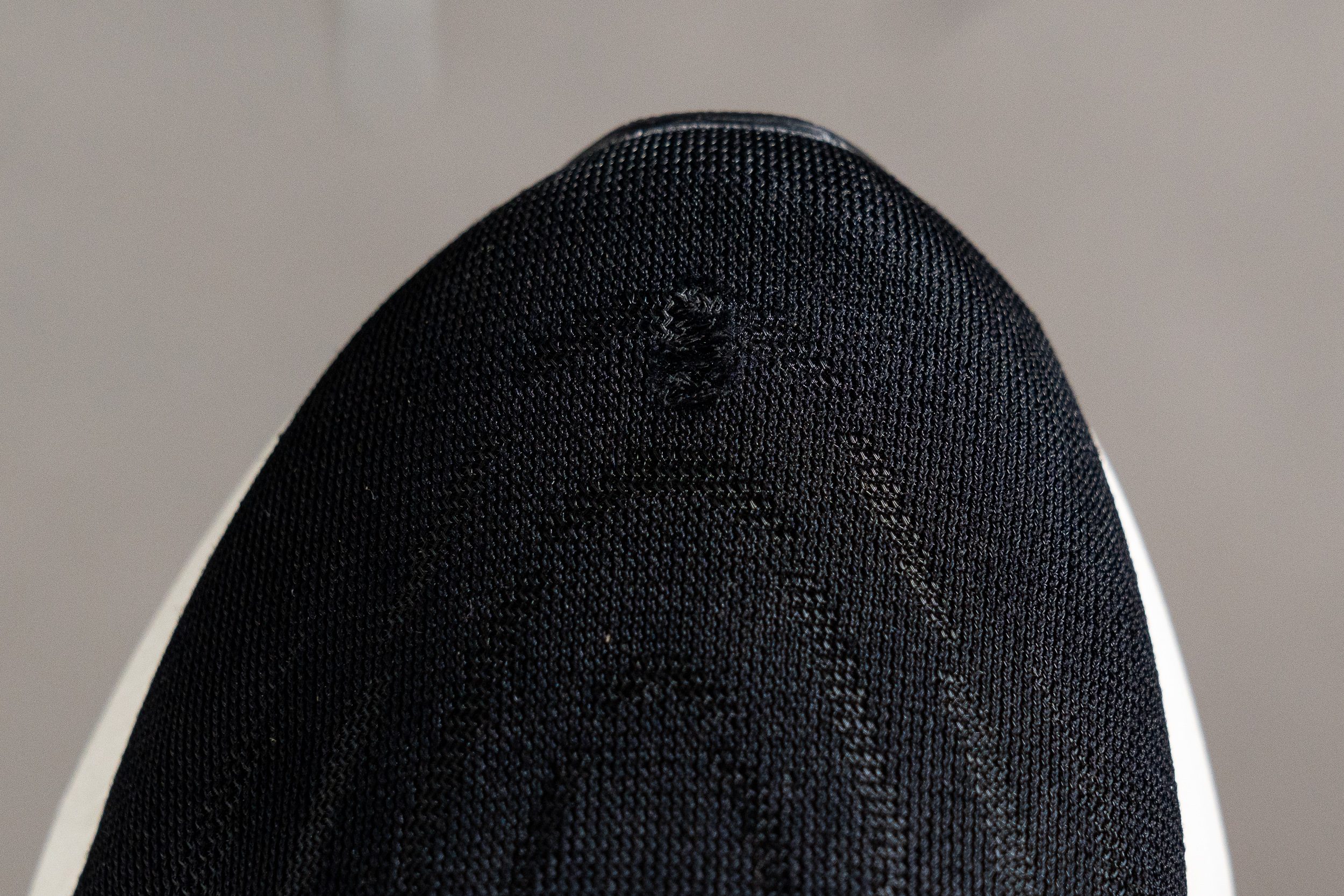
| GT 2000 13 | 4 |
| Average | 2.6 |
Heel padding durability
But wait—things improve even more! For those who often wear out the Achilles tendon area of their running shoes, the GT 2000 13 proves to be a robust choice. We found it scored a 5/5 in our second Dremel test.
This is a superb result that promises an exceptionally long lifespan for the upper of the GT 2000 13.

| GT 2000 13 | 5 |
| Average | 3.4 |
Outsole hardness
Turning our focus to the outsole, the Japanese brand adopts a cautious strategy here, tweaking the v12's design slightly by adding more rubber in wear-prone areas.

Our tests showed a hardness of 82.1 HC, close to average—expected for a shoe designed with a no-risk approach, and suggesting it will be quite durable.
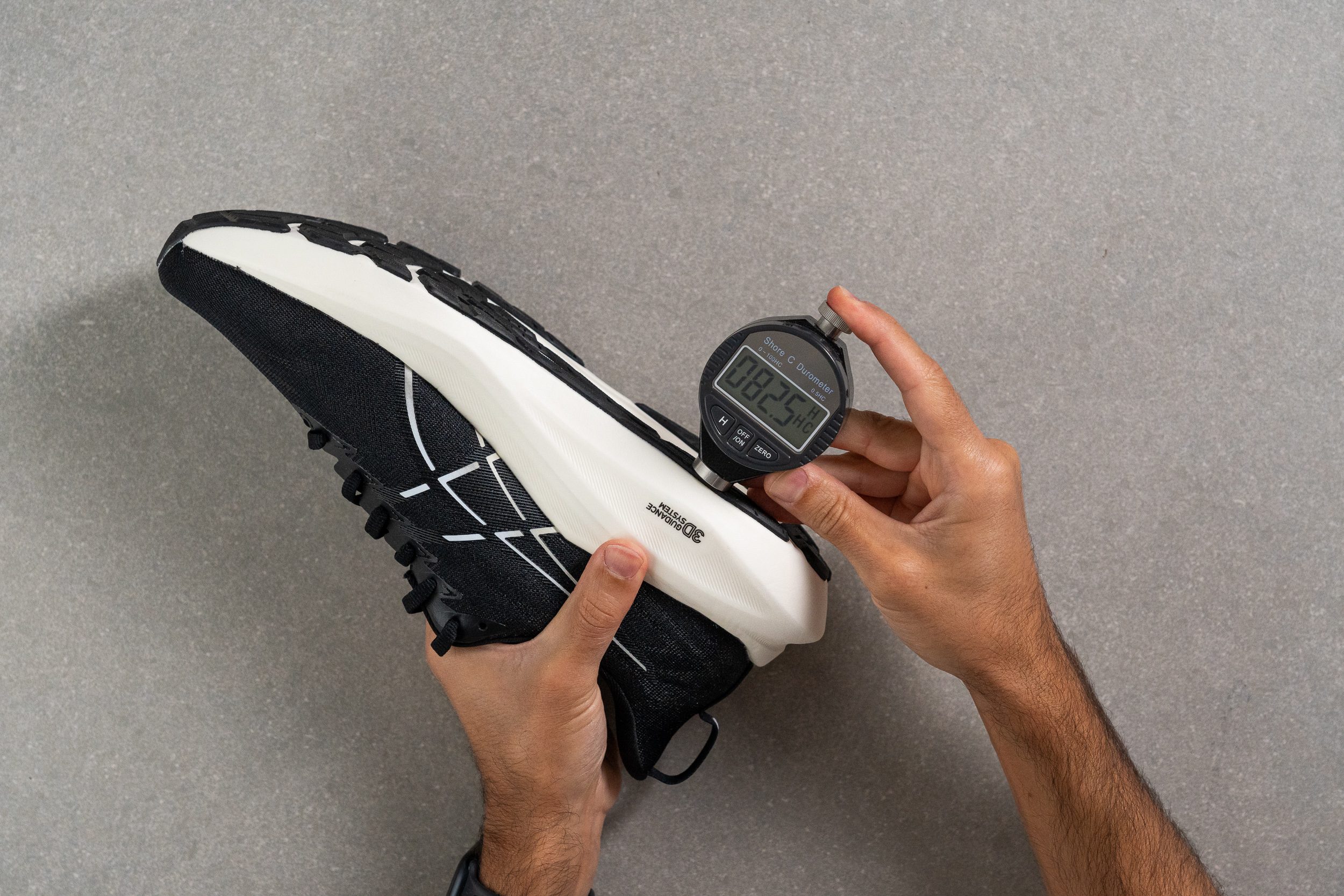
| GT 2000 13 | 82.1 HC |
| Average | 79.2 HC |
Outsole durability
It appears the GT 2000 13 is engineered to excel in durability tests, as it has triumphed in our Dremel challenges for the third consecutive time.
In our latest test, we noted only a minimal 0.4 mm dent in the outsole, underscoring its exceptional durability.

| GT 2000 13 | 0.4 mm |
| Average | 1.1 mm |
Outsole thickness
But for those still concerned about durability, here's something else—ASICS has added 4.5 mm of rubber beneath the midsole, significantly more than usual.
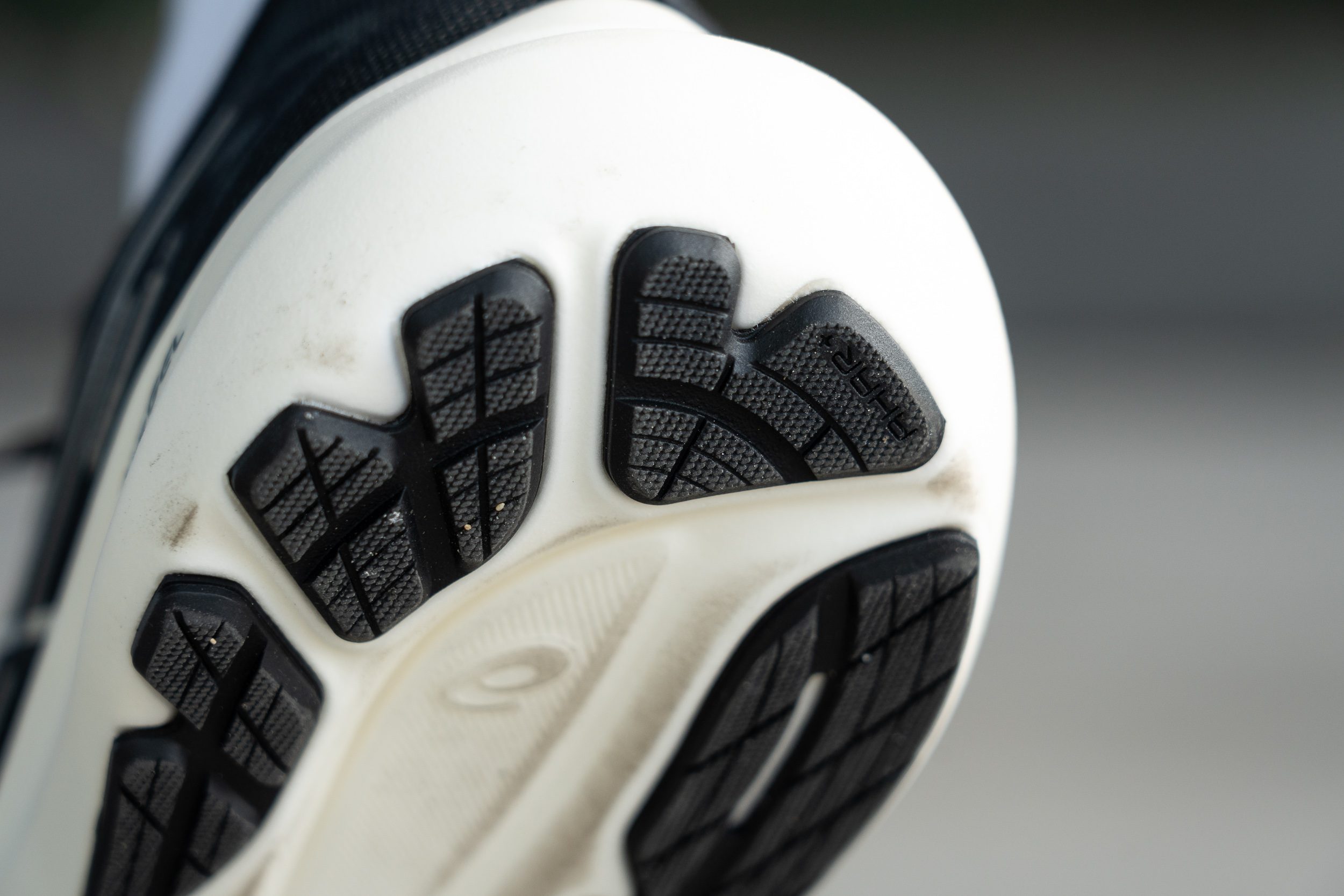
We now have a combination of high-lasting rubber with substantial thickness, and it would be bizarre that the outsole will wear out first, regardless of your stride.
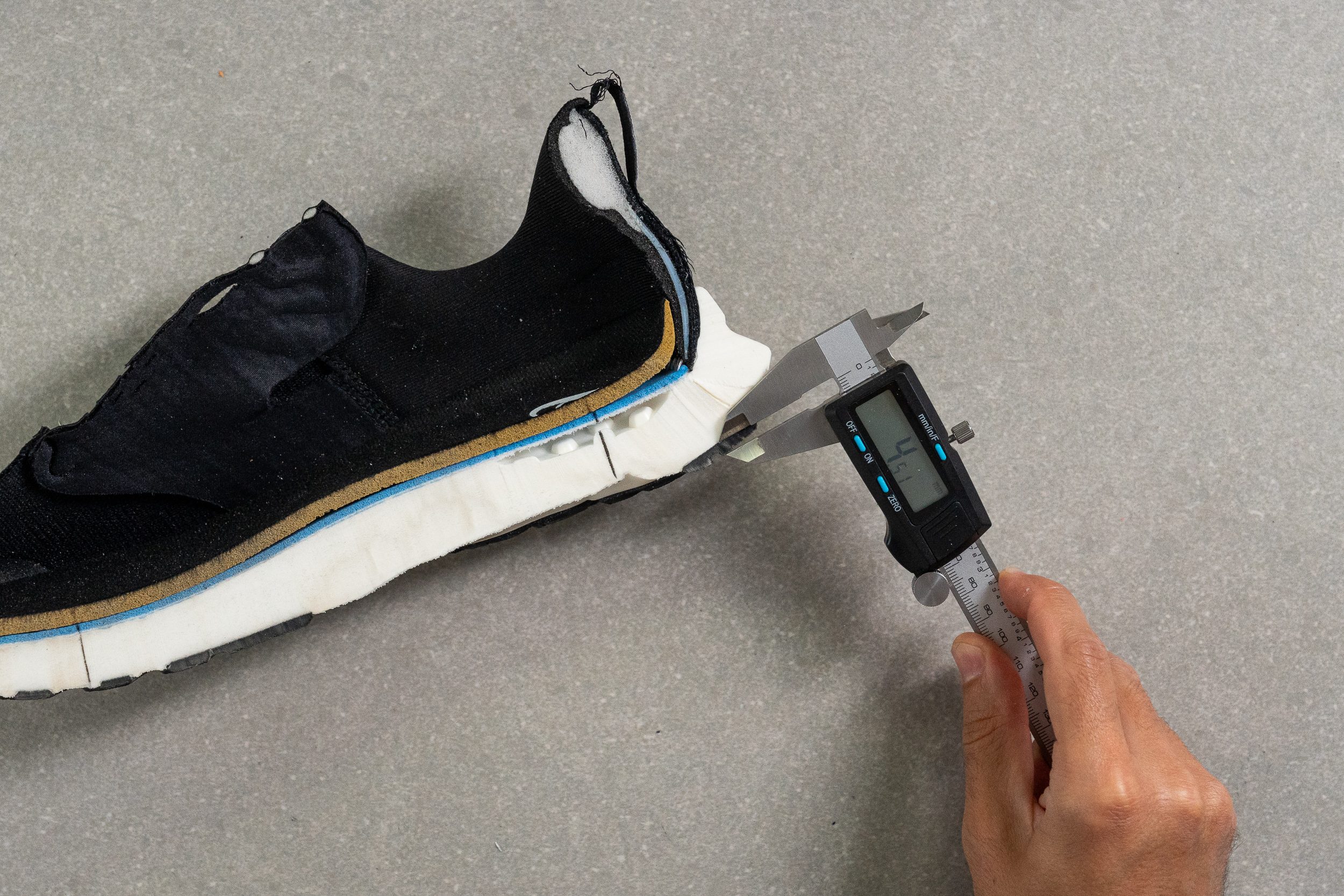
| GT 2000 13 | 4.5 mm |
| Average | 3.2 mm |
Misc
Insole thickness
We discovered the GT 2000 13 features a 5.1 mm insole, thicker than usual.
Notably, this isn't just any insole but the Ortholite X-55, a model often found in other high-end running shoes and that, as it's name suggest and the brand claims, returns 55% of energy on every stride, more than traditional EVA footbeds.
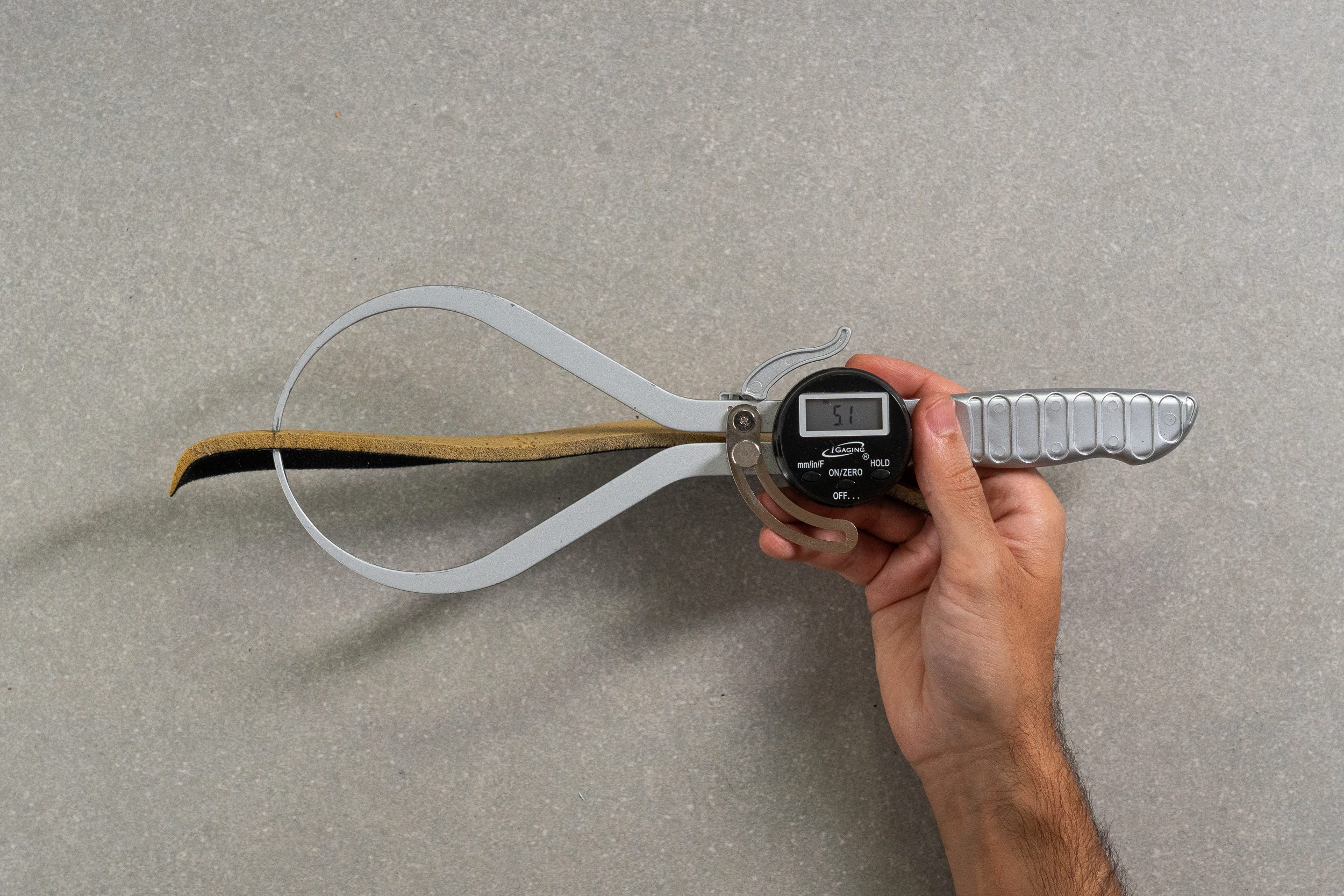
| GT 2000 13 | 5.1 mm |
| Average | 4.5 mm |
Removable insole
We easily removed the insole, which apart from reflecting the shoe's carbon footprint, is quite standard in terms of shape, allowing for hassle-free replacement.
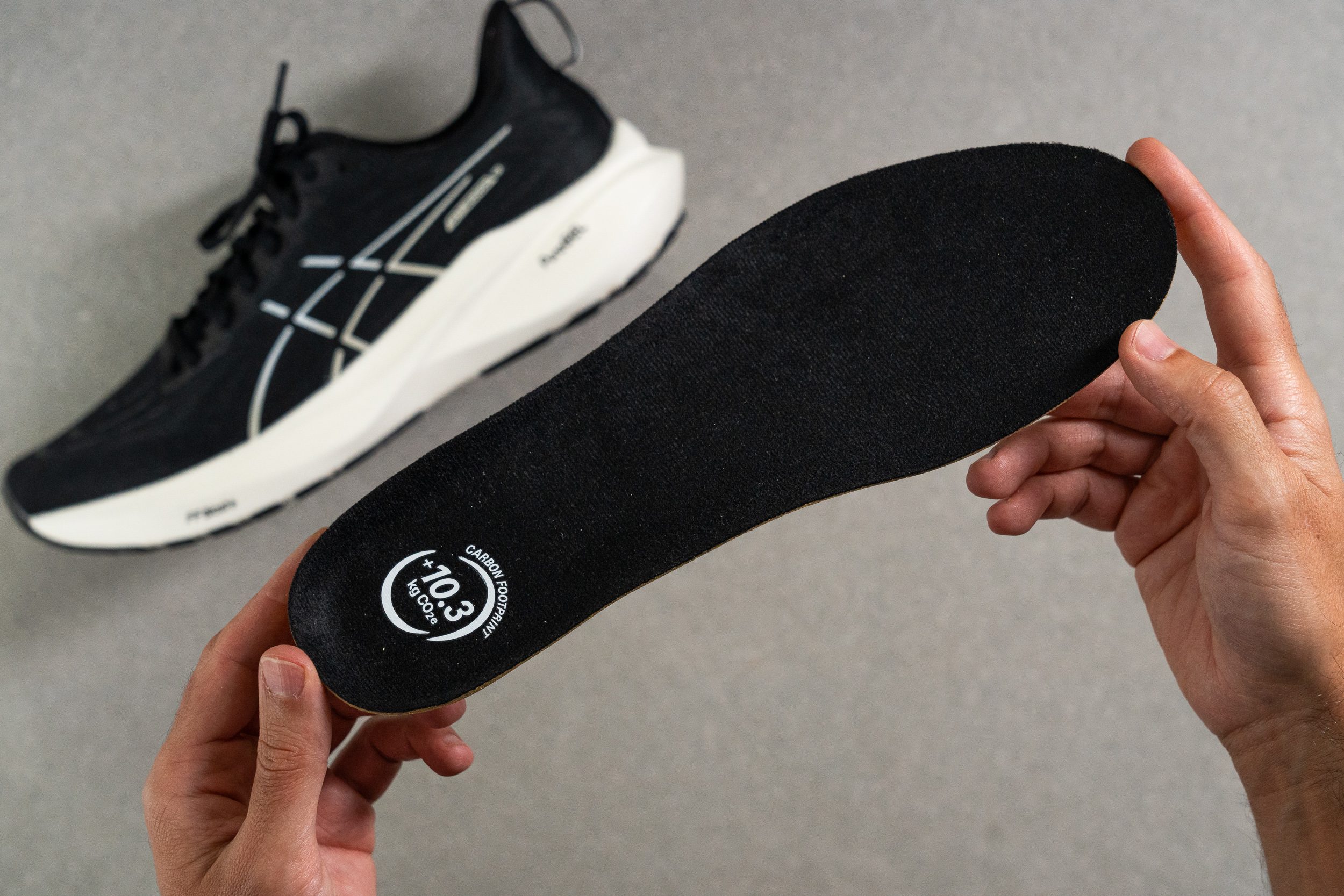
| GT 2000 13 | Yes |
Midsole softness in cold (%)
FF Blast+ is a mix of EVA and Olefin Block Co-Polymers (OBC), which improves the behaviour under cold temperatures. While EVA typically hardens noticeably in the cold, OBC maintains a more stable softness.
During our 20-minute freezer test, we discovered a 24.3% uptick—a result we view as quite favourable!
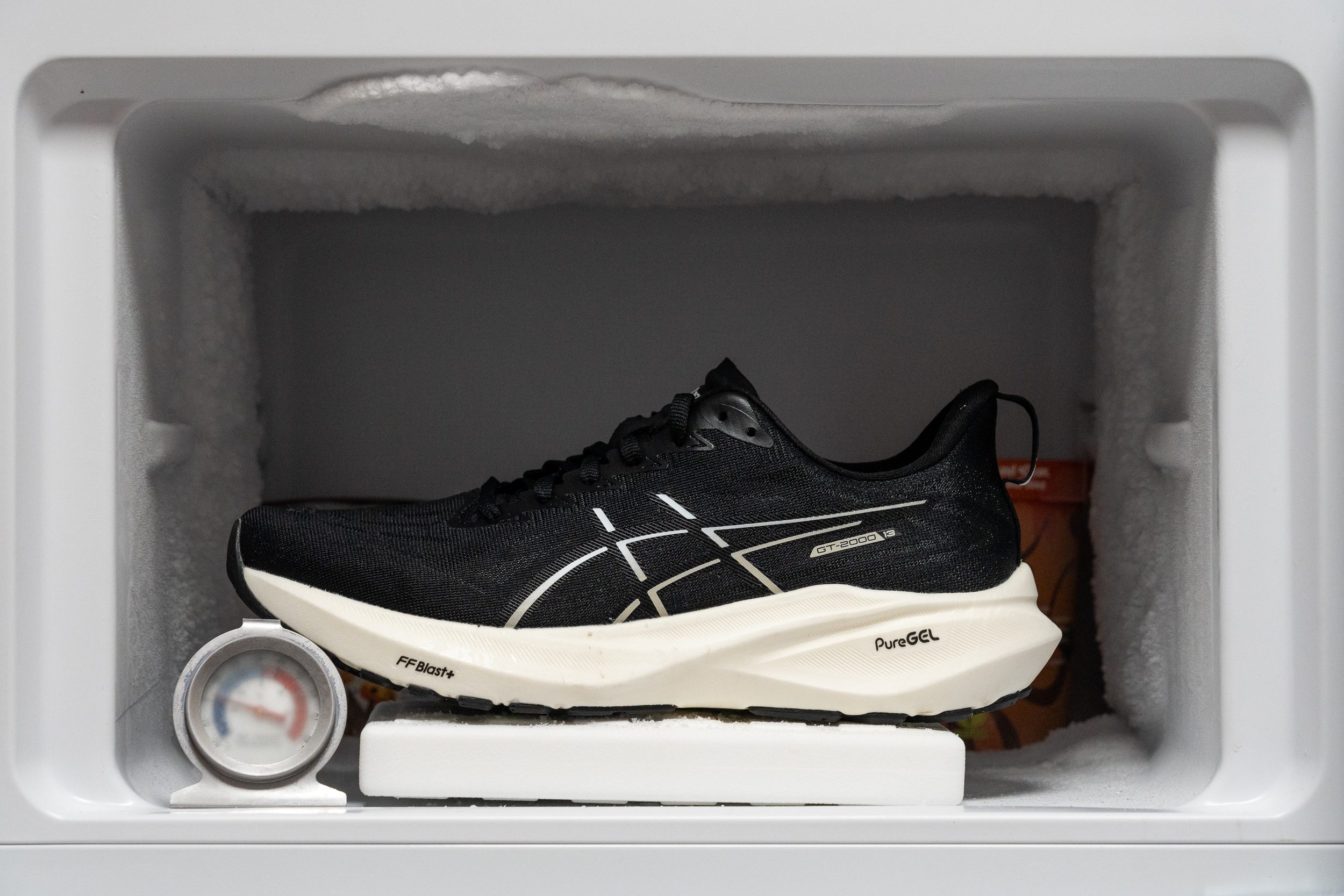
| GT 2000 13 | 24% |
| Average | 24% |
Reflective elements
The GT 2000 13 demonstrates that brands can easily incorporate reflective elements into running shoes at minimal cost and without added weight—simply adding a small reflective piece on the heel is sufficient for us, as it significantly enhances visibility at night.
| GT 2000 13 | Yes |
Tongue padding
In the GT 2000 12, we found the 12.5-mm tongue excessively thick and even cumbersome. It seems ASICS took our feedback to heart, as they've now opted for a much slimmer 3.3-mm tongue, even thinner than what’s standard in training shoes.
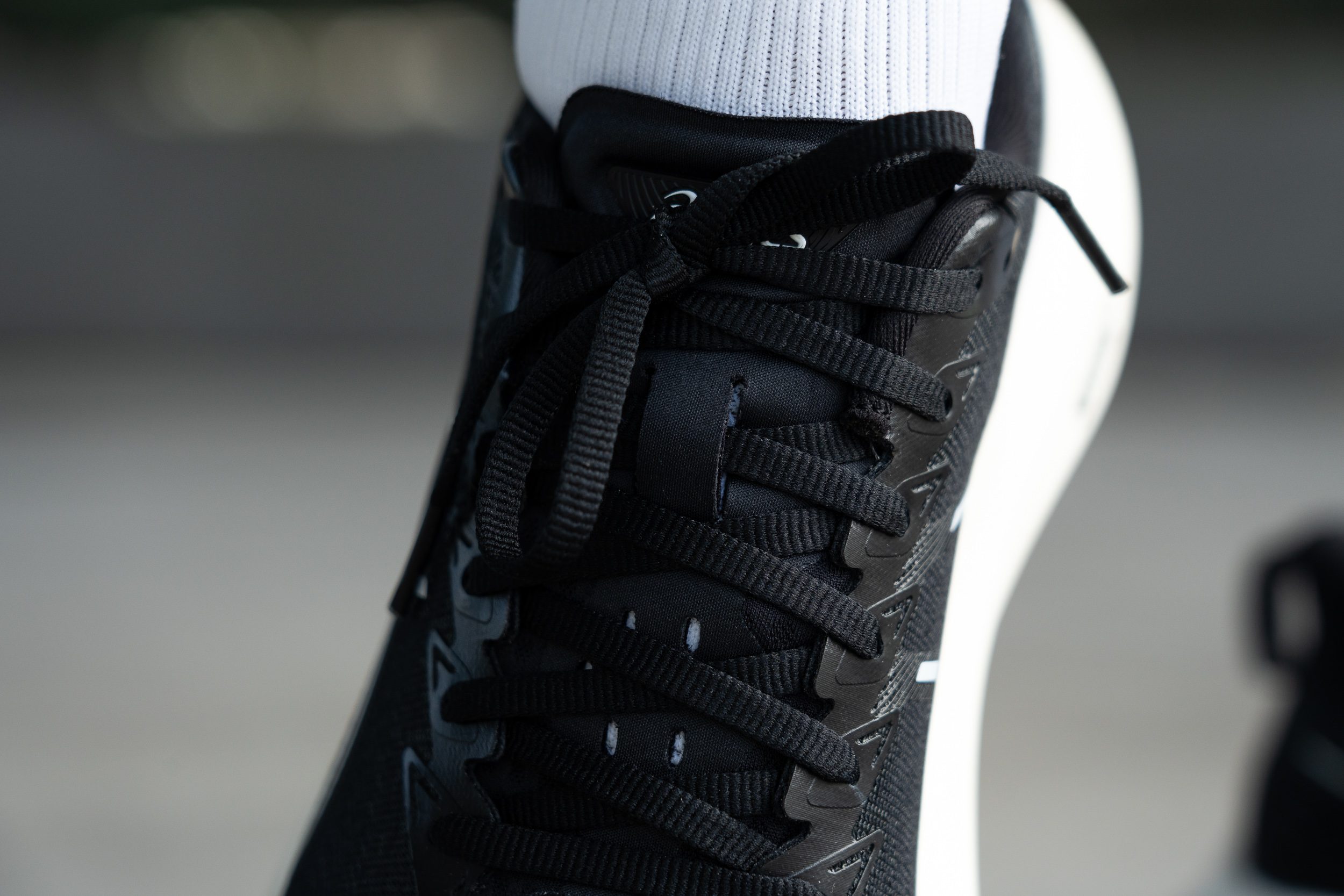
While a tongue thickness of around 5 or 6 mm might be a better deal, we definitely prefer this streamlined version over last year's. It's also important to note that this reduction is a key factor in the overall weight reduction of the shoe.

| GT 2000 13 | 3.3 mm |
| Average | 5.8 mm |
Tongue: gusset type
Another notable feature of the GT 2000 13 is its semi-gusseted tongue, which enhances the lockdown as it's fixed to the sides. This is particularly crucial considering the redesigned tongue padding we discovered in this shoe...

| GT 2000 13 | Both sides (semi) |
Price
We've always considered the GT 2000 series well-priced for its value, and we're pleased to report that it hasn't seen an increase from the previous model, maintaining ASICS's recommended price tag—which is definitely great news in today's market.
| GT 2000 13 | $140 |
Heel tab
The heel of the GT 2000 13 matches the rest of the shoe—functional but unsurprising. We found a standard finger-loop heel tab that effectively serves its purpose and appears durable enough to last the shoe's entire lifespan.
We also liked the small tweak that ASICS added to the heel collar, alleviating pressure on the Achilles tendon, somewhat similar to what Hoka does.
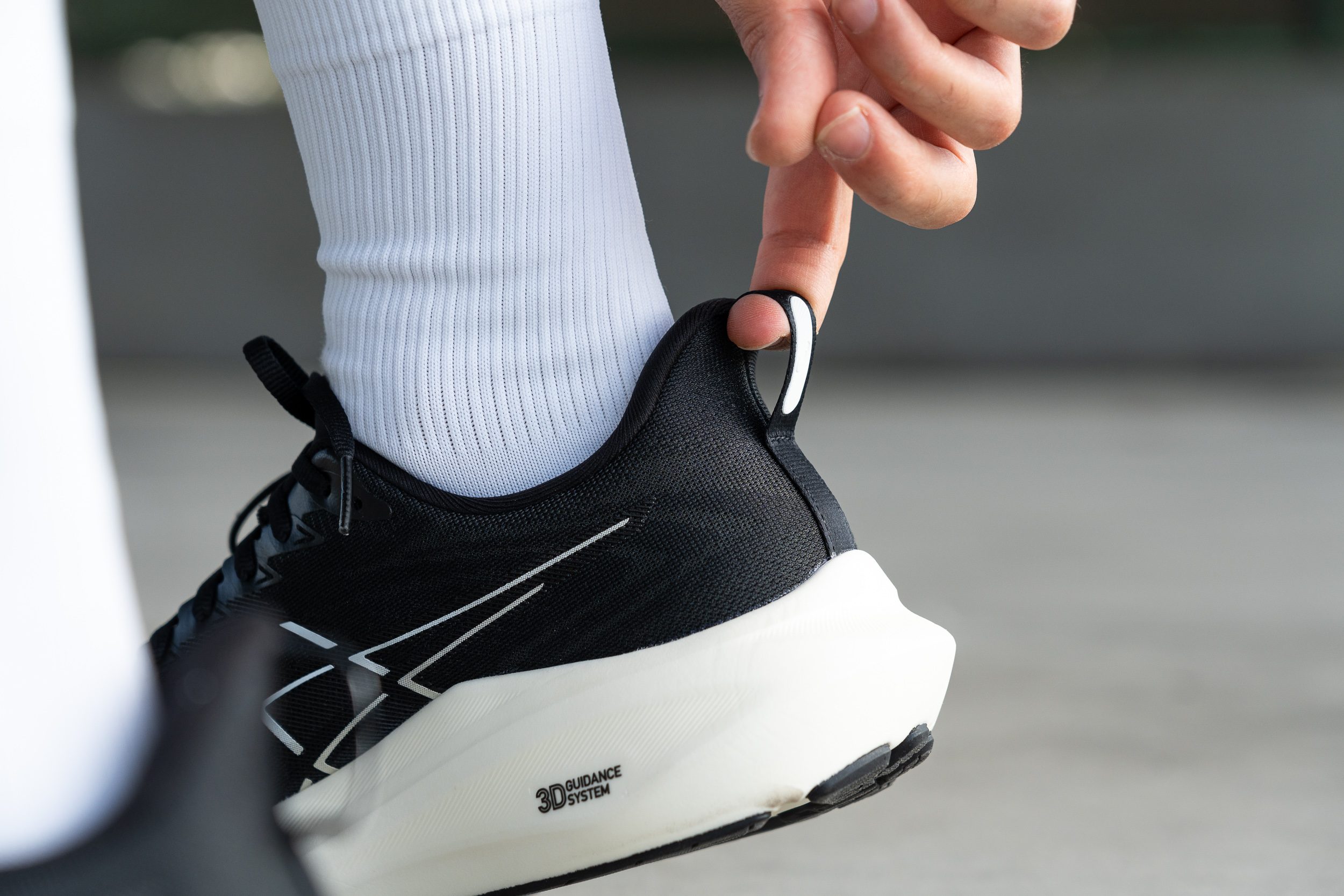
| GT 2000 13 | Finger loop |

